



VOICE AT THE HEART OF CULTURAL LEADERSHIP

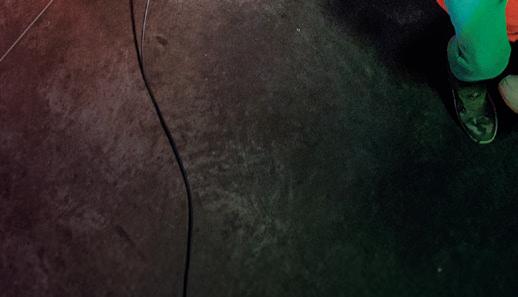


SAAD EDDINE SAID RETURN PLACING CITIZEN
VOICE AT THE HEART OF CULTURAL LEADERSHIP










SAAD EDDINE SAID RETURN PLACING CITIZEN
VOICE AT THE HEART OF CULTURAL LEADERSHIP

Saad Eddine Said CEO and Artistic Director New Art Exchange
RETURN didn’t start with a theory. It began with a realisation: the people most affected by cultural leadership were the least likely to shape it.
At New Art Exchange, we stopped asking what inclusion looks like and started asking what power feels like. RETURN emerged not as a consultation exercise, but as a structural transformation. Not a project, but a permanent change in how leadership is shared.
What follows is a blueprint, a methodology and an approach that has been tested, implemented, and proven. It has reshaped leadership, programming, funding decisions, and institutional direction. It has shown that when citizens lead, institutions grow stronger.
Cultural institutions across the world are facing the same storm: declining trust, fragile finances, and a growing gap between mission and method. RETURN responds by shifting the paradigm and changing the shape of leadership entirely. We offer this blueprint with one clear invitation to the cultural sector: stop being radically inactive and start doing leadership differently if we truly want a cultural sector for, by and with all.
RETURN was written for those ready to move. For those tired of symbolic change. For those willing to build something lasting, with citizens at the heart.
Throughout the book, I share some of my own thoughts, doubts, and learning because meaningful change starts with those who hold power. If we’re serious about transformation, we must be willing to examine our own leadership first.
We at NAE, together with our citizens, have made the first step. Now it is your turn.
RETURN is more than a theory. It is a revolution in cultural leadership. When I arrived at New Art Exchange (NAE) in 2021, I encountered an institution committed to and passionate about inclusivity, yet still operating within traditional leadership structures in which decision-making power was primarily held by executive leadership. This disconnect sparked the development of RETURN, not as an experiment, but as a tested model that would permanently redistribute power.
Our journey began with three fundamental questions: If cultural institutions exist to serve communities, why are those communities absent from leadership roles?
How can power be transferred from boards and executives to citizens who have long been excluded?
What happens when cultural leadership is no longer a privilege, but a shared responsibility?
Since implementing RETURN at NAE in 2022 we have tested and refined this model, and now have tangible and measurable results that clearly demonstrate that RETURN is a successful model for sharing leadership in a cultural institution. Through the Three-Pillar Leadership Model, which redistributes power equitably, RETURN ensures that power-sharing is not merely a symbolic gesture but an embedded institutional reality. RETURN reimagines leadership within cultural institutions and offers a proven framework in which power is shared, voices are heard, and leadership is co-created by citizens, executives, and boards together.
Citizen-led decision-making is no longer optional: it is an imperative. Cultural institutions are at a crucial turning point and must now decide: embrace a shared leadership model that is a genuine expression of the communities they serve, or continue with hierarchical, top down governance and risk irrelevance.
This transformation has been met with resistance: institutions fear losing control. But at NAE we have proven that shared leadership does not weaken institutions. It makes them stronger, more relevant, and more connected to their communities.
In putting RETURN into practice at NAE, we have demonstrated that citizenled decision-making is not only possible, but essential. The question now is not if institutions will adopt this model, but how quickly they will act. This blueprint is a call to action for institutions, funders, and policymakers ready to commit to long-term change. The change has begun.
Will you be part of it?





My dad once told me,
‘Face the storm head-on, walk toward it, and it will fade.
But if you walk alone, it will break you. Find your tribe first.’
The storm is here. Institutions are crumbling, society is shifting, and the old systems of power are becoming irrelevant. We can no longer afford to maintain the status quo. The question is simple: Will we rise up and reclaim our relevance, or will we let everything fall apart around us?
For too long, we’ve lived in a world where decisions have been made by the few for the many. Political, social, and cultural power is concentrated in the hands of a small elite, while the rest of us are left on the sidelines.
The storm is here. The world as we know it is breaking, and it’s time to ask ourselves: Will we sit back and watch? Or will we face the storm, rebuild, and create something better, together?
This is a societal issue, not merely a cultural issue. Leadership is failing us. The systems that were once in place to serve society are breaking under the weight of outdated practices. The question is: What will we do about it?
Culture is the heartbeat of society. It’s where we shape our values, define our identities, and tell our stories. Culture isn’t just a reflection of who we are; it’s a living force that shapes our future. As the world changes beneath our feet, culture must lead the way.
RETURN is more than a blueprint for cultural leadership. It’s a call to arms for the cultural sector to reclaim power by sharing it, to reshape how decisions are made, and to create spaces where decision-making power is held by the people who matter most: the communities we serve. This is not just about doing things differently. It’s about creating something fundamentally new. It’s about redistributing power, embracing collaborative leadership, and building institutions that truly serve their people, not just reflect them.
At New Art Exchange (NAE), we’ve embarked on this journey by embedding citizen-led decision-making at the heart of our institution. But this isn’t just about one institution. We can’t do this alone. The transformation must be global. It’s time for an international coalition of institutions, artists, cultural workers, leaders, and communities to unite, share strategies, amplify our efforts, and build a new culture of leadership that is truly participatory and inclusive. The cultural sector has the potential to drive this revolution, not just in our own institutions, but by uniting across borders and setting the example for shared leadership across all parts of society.
Art and culture have the power to redefine society, to rewrite the narrative we’ve been told, and to forge a new path for the future. But for that to happen, we must act. Will we step up and embrace a new model of leadership, or will we sit back and watch as the world continues to change without us?
One thing is clear: institutions cannot afford to stand still. Cultural organisations are facing financial instability, declining public trust, and stagnated leadership models. RETURN is not just a response. It is a tested, structured pathway to leadership transformation. It shifts power, ensures resilience, and future-proofs institutions.
The journey starts now. We are at the crossroads. The choice is ours. Will you join the global coalition and help lead the transformation of cultural leadership, or will you watch from the sidelines as others shape the future without you?
Redefining leadership at New Art Exchange (NAE) began with a fundamental question that became a personal reckoning: If institutions claim to serve their communities, why are those communities absent from leadership?
When I first stepped into the role of CEO at NAE, I was deeply committed to diversifying the voices that we platformed. NAE had long championed underrepresented artists, expanded access to cultural spaces, and engaged marginalised perspectives. But as I looked at our leadership structures, I realised that something was missing. Despite all our efforts, decision-making remained firmly in the hands of the few: our executive team and Board of Trustees. Communities who shaped our mission, whose needs we talked so much about serving, were not shaping the decisions that drove us forward.
I often found myself asking, How can we genuinely give power back to the people we serve? How do we move beyond participation into real decision-making power?
This question became personal. As a leader, I felt the weight of this imbalance, realising that true leadership transformation couldn’t simply come from nicely-worded policies or external outreach initiatives. It had to be embedded at the core of how the institution functioned on a day-to-day basis. It had to be a redefinition of leadership itself.
RETURN was the answer. It wasn’t about creating another consultation project that merely invited people to share their opinions. It was about building a leadership model that permanently embedded citizen-led decision-making into the strategic, artistic, and organisational leadership of NAE. This was more than a theory. It was a shift in power that would require courage and a complete revolution in how we approached institutional leadership and decision-making.
We knew we had to genuinely redistribute power. This journey required rethinking not just institutional structures, but also our approach to authority:
Mapping decision-making power: I began by identifying where authority was concentrated within the institution and how we could distribute it more equitably.
Embedding citizen-led decision-making: Our goal wasn’t just to consult; we aimed to ensure community members had real strategic influence, where their voices were not just heard but integrated into how we made decisions.
Shifting executive roles: The role of the executive team had to evolve from one of top down control to facilitation, supporting rather than directing the institution.
Restructuring decision-making: The Board of Trustees had to shift from a traditional decision-making role to one that supported power-sharing, ensuring leadership remained inclusive, accountable, and dynamic.
This was never about providing recommendations from a position of authority. It was about empowering the community to take the lead, to co-create the future of NAE together.


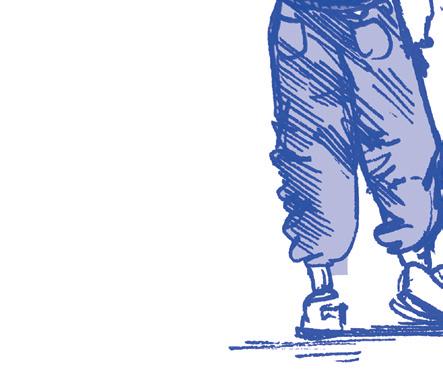



Implementing RETURN wasn’t easy, but the results were undeniable:
More inclusive: Communities directly shaped not just programming, but institutional priorities such as our new Children’s Biennial, co-created with children from Hyson Green to ensure their needs are woven into the fabric of NAE’s work.
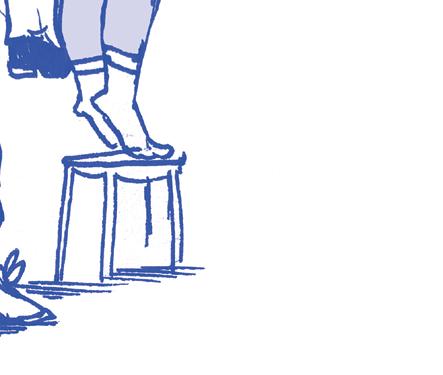
More accountable: Leadership was no longer an exclusive space for a handful of executives. It was shared, ensuring transparency and responsiveness.
More sustainable: Leadership was no longer dependent on a single generation of executives; it was embedded within the institution’s governance model, making it adaptive and resilient in the face of change.
But this shift wasn’t without its challenges. Institutions fear the loss of control, and we saw first-hand how this fear could hold back change. Yet, what we learned was clear: institutions do not weaken when power is shared. They become stronger, more relevant, and more trusted by the communities they serve.

RETURN is not a temporary initiative: It is a new model for leadership. What began as a journey of transformation at NAE is now a proven model that can be adapted and scaled nationally and globally, showing that when we redistribute power, the institution itself becomes more inclusive, resilient, and trustworthy.

Leadership transformation requires more than good intentions. It demands structure, strategy, and sustained commitment.
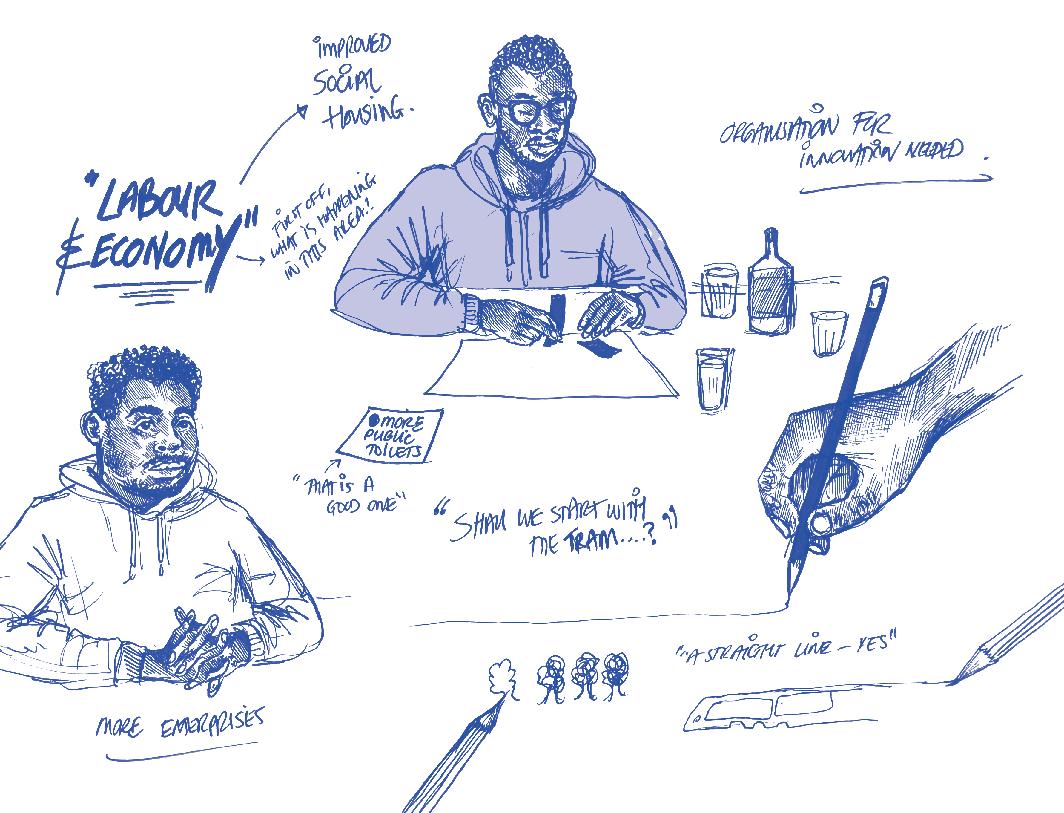

RETURN is not just a concept; it is a leadership model designed to embed citizen leadership as a permanent part of institutional decision-making. It achieves this through a structured approach built upon three foundational frameworks: the Three-Pillar Leadership Model, the Six Stages of RETURN, and the Framework of FIVES. Together, these elements create a clear pathway for institutions to shift from traditional models of governance to truly participatory citizen leadership.


At the heart of RETURN is a structural shift in leadership, ensuring that power is not concentrated at the top but shared across three interconnected pillars:
This pillar holds real authority over institutional strategic direction within its neighbourhood work. At NAE this takes the form of the VOICE Assembly, a permanent citizen leadership body, with membership selected through a civic lottery, ensuring diverse representation across gender, ethnicity, age, disability, and education. Membership of the VOICE Assembly is renewed every two years, ensuring fresh perspectives and continued inclusivity. By embedding citizens as co-leaders, RETURN moves beyond advisory models to meaningfully redistribute power.
The role of executive leadership shifts from controlling decision-making to facilitating participatory decision-making processes. Directors and teams are responsible for ensuring participatory leadership is operationally viable, integrated into strategy, and sustainable over time. They create the conditions in which citizen leadership can thrive and genuinely impact institutional direction.
The Board of Trustees provides structural support to sustain citizen leadership while ensuring alignment with the institution’s mission and long-term sustainability. Rather than dictating strategy, the Board’s role is to prevent leadership imbalances and reinforce the model’s resilience and inclusiveness. It still fulfils all legal and financial responsibilities in line with Charity Commission guidance, ensuring accountability alongside shared leadership.
These three pillars work together to drive mission, excellence, and relevance. By embedding citizen leadership within a clearly structured model, RETURN ensures that power-sharing is not a temporary initiative but a permanent, adaptable approach that strengthens institutions. The Six Stages of RETURN provide the roadmap for implementing this model, ensuring the transition from concept to sustainable practice.
Transforming leadership is a process, not a single event. RETURN follows a structured, phased approach across six stages that allows institutions to progress from rethinking leadership to fully embedding citizen power:
Mapping power imbalances and committing to change.
Structuring leadership roles that centre community authority.
Shifting from symbolic participation to embedded citizen-led decision-making.
Expanding citizen leadership into all areas of institutional strategy.
Redefining institutional identity around power-sharing.
Scaling RETURN as a model for global leadership transformation. Each phase builds on the last, ensuring sustainable change that lasts beyond leadership transitions.
RETURN is more than a leadership philosophy; it is a structured, actionable framework for transforming institutional decision-making. The Framework of FIVES ensures that power-sharing is sustained through five interconnecting areas:
Establishing a deliberative leadership culture through structured decisionmaking principles, including shared power, iterative consensus, and equity-driven decision-making.
A five-step implementation journey that transitions institutions from reflection to embedding citizens within leadership and decision-making.
Identifying and overcoming systemic barriers to power-sharing, such as legal constraints, executive leadership resistance, financial sustainability, and institutional inertia.
A phased approach to securing funding, policies, and governance structures that protect and sustain citizen-led decision-making beyond the initial transition.
Embedding RETURN at scale through multiple pathways, from full institutional adoption to advisory evolution and funder-led integration.
By using the Framework of FIVES, institutions can move beyond temporary participatory models of consultation and ensure that citizen-led decision-making becomes a permanent, embedded reality.
at NAE, proving that citizen leadership strengthens institutions, deepens trust, and drives long-term success. RETURN
different sizes and contexts a tested pathway to explore transformation. The question is no longer whether institutions are genuine leadership transformation.
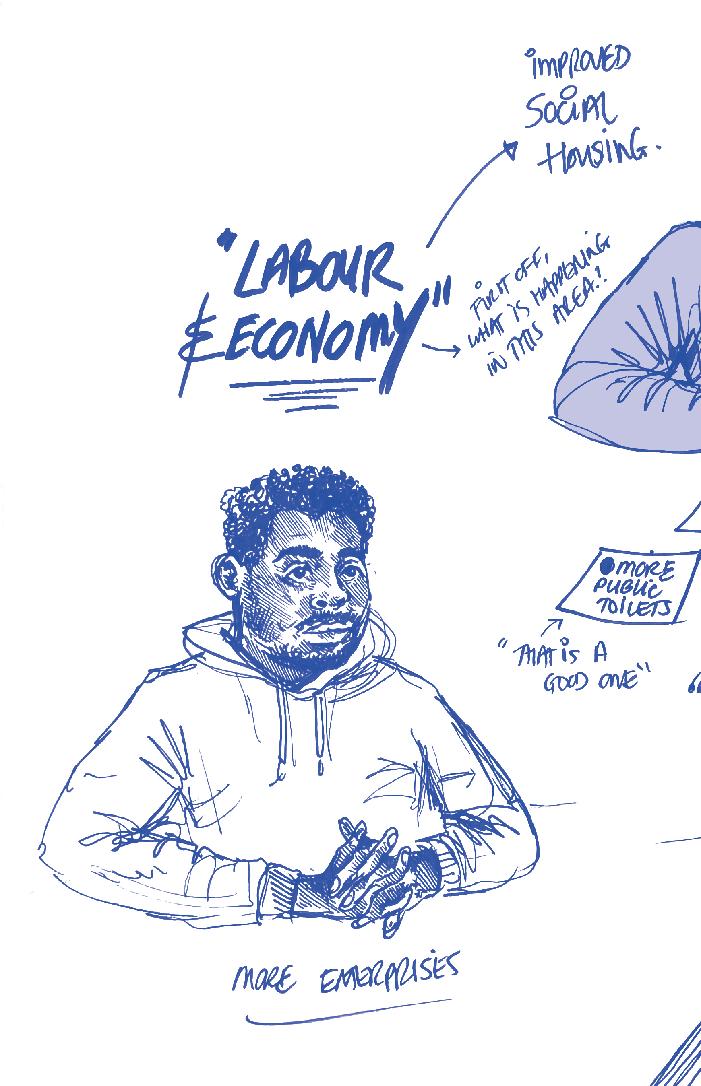



When we first began this journey at New Art Exchange (NAE), I knew it was vital that RETURN went beyond being a symbolic gesture. It wasn’t about designing a new model just for the sake of innovation; it was about redistributing power in tangible, meaningful ways. We weren’t simply theorizing about leadership transformation: we were, and are, living it.
From the outset, it became clear that for RETURN to work, we needed to measure its impact not just through institutional change, but through the lived experiences of the people who would drive and shape that change. We needed to understand: What has fundamentally changed? What have we learned about power-sharing? And more importantly, what do data, testimonies, and lived experiences together reveal about the real-world implications of this leadership shift?
I saw first-hand how fear was often present in this shift. For so many people in positions of power, the idea of sharing authority is unsettling. But as we began embedding power-sharing into NAE’s decision-making structures, programming choices, and leadership model, I was struck by how quickly trust began to build. Power-sharing is not an abstract concept: it’s a living, breathing practice made real through the voices of those who are so often excluded from the decision-making table.
The most profound shift came when I saw leadership evolve from a topdown model to a truly shared and participatory activity. How do you let go of control? How do you share authority without losing direction? These were the questions I wrestled with, knowing that our commitment to citizen-led decision-making would only be as strong as the trust we could build. This wasn’t just an institutional overhaul; it was a personal journey for me as a leader.
The speed at which citizens began co-creating programming was striking. It wasn’t just about giving feedback anymore. People were commissioning, curating, and directly influencing institutional strategy. It was empowering for many of the community leaders who had joined us in this process, a complete shift from the traditional role of “advisors” to that of powerful decision-makers.
I will never forget the first time I saw a community member take the stage at NAE, not as an artist or a participant, but as a leader guiding others through the programme. This is what RETURN is all about: real powersharing.
Measuring the success of this transformation was never going to be possible through quantitative data alone. While numbers matter, the true impact of RETURN lies in the depth of meaningful change. I saw for the first time how communities began to shape the future of the institution, not just through programmes and exhibitions, but through their direct influence on institutional strategy.
What I’ve learned is that power-sharing is not a transaction; it is an ongoing process that requires continued reflection, adaptation, and commitment. RETURN supports institutions to evolve and adapt through each of its six phases, with the understanding that change is a continuous work in progress. It’s not enough to implement change in isolation. We must ensure that this model takes root and grows beyond one institution, one leader, or even one community.
As RETURN continues to evolve, the real test now lies in ensuring the long-term sustainability of these changes. How do we ensure that these shifts are not temporary but remain at the heart of our institutions? How do we make sure that these changes will endure long after the initial excitement fades? How do we move beyond individual case studies to create a sector-wide transformation?
I’m often asked if RETURN is a “finished” model. My answer is always the same: RETURN is a work in progress. The real work is in ensuring that power-sharing is deeply embedded in the fabric of the institution, that it can adapt to new challenges and continue to include the communities we serve.
Ultimately, I have learned through implementing RETURN that it’s not enough merely to talk about change. What matters is how deeply that change takes root, how far it spreads, and how it shifts the power dynamics within cultural institutions, and, perhaps more importantly, within society. This is where theory meets practice, and where we meet real, tangible change.
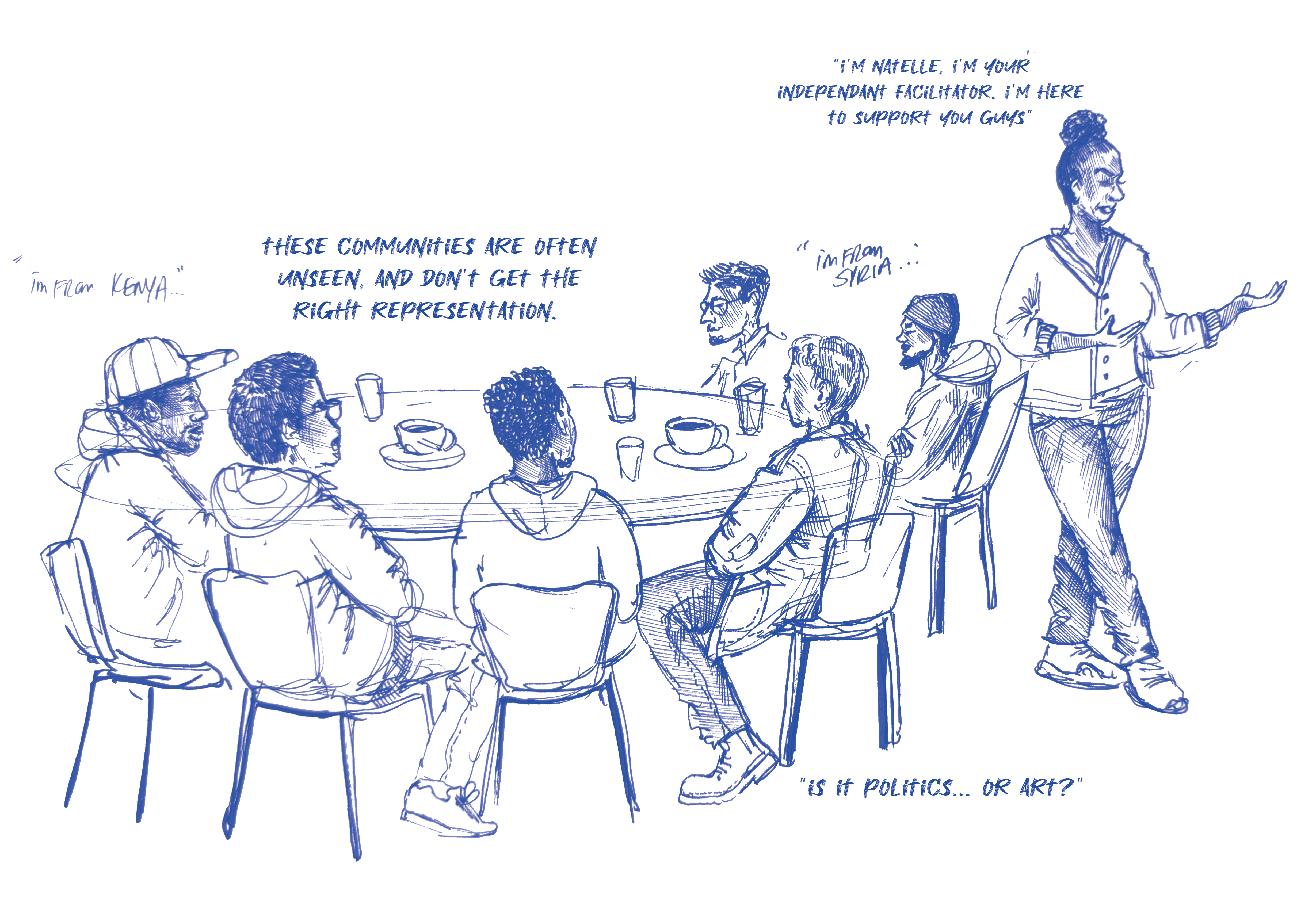

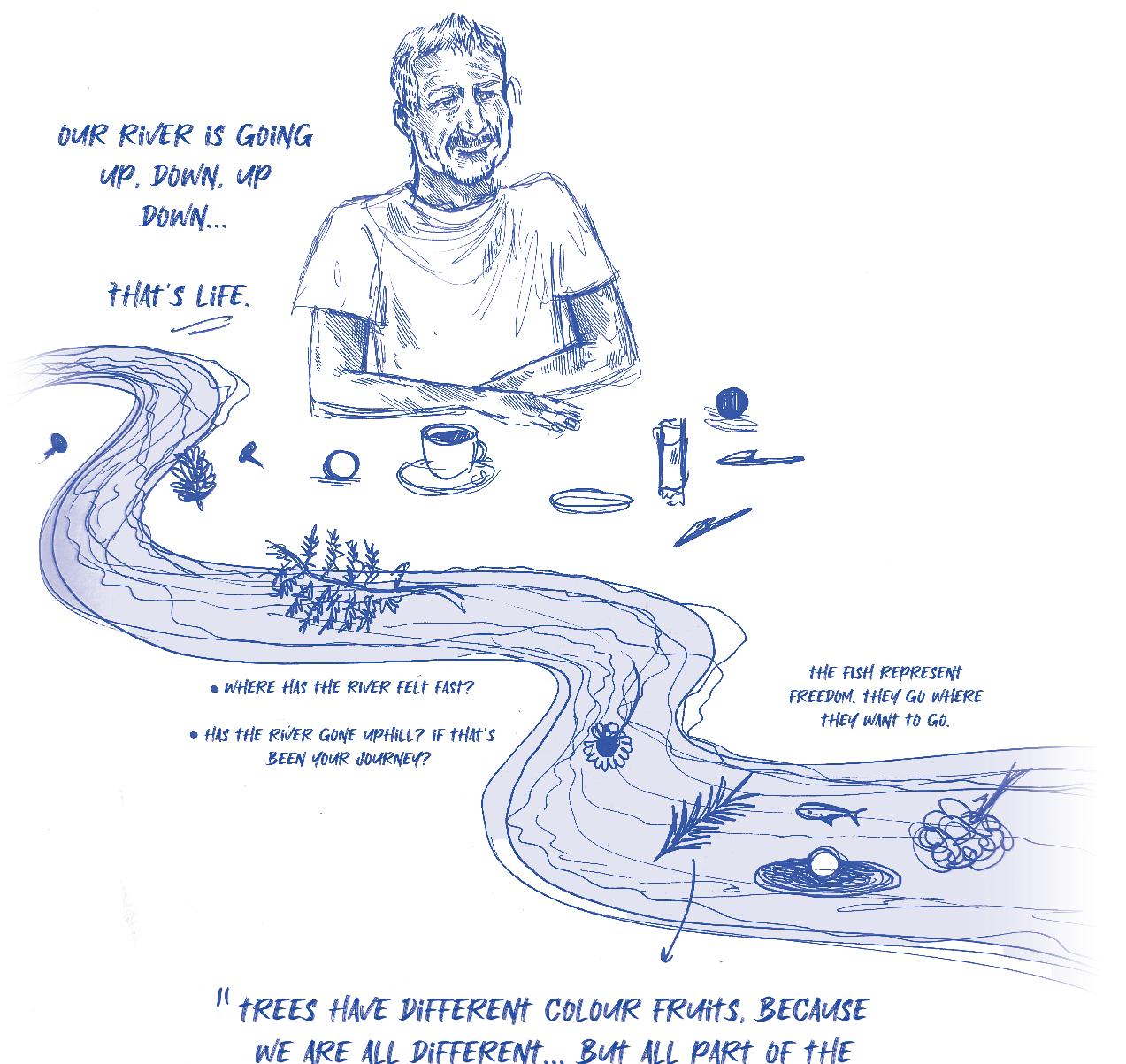
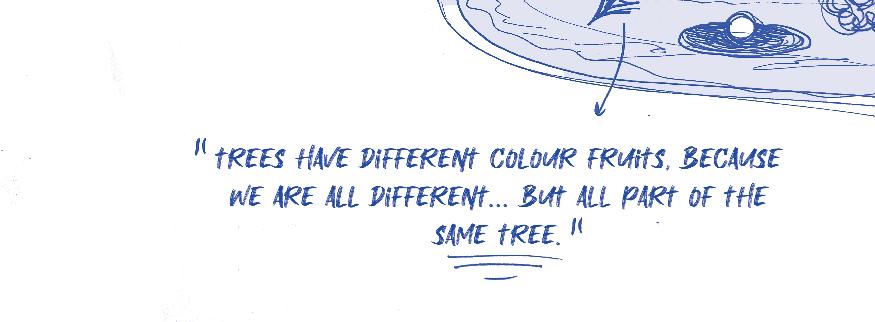
RETURN has redefined leadership at New Art Exchange (NAE), shifting from a top-down institutional model to a co-created, citizen-led framework. More than a structural shift, this transformation positions NAE within a growing global movement of cultural institutions seeking to embed citizen leadership within their organisations. The impact of RETURN extends beyond programming. It has reshaped how decisions are made, how resources are allocated, and how we understand our long-term civic role in the neighbourhood of Hyson Green, where NAE is situated. RETURN also aligns with international innovations in shared leadership: from participatory budgeting in Paris to citizen-led cultural policymaking in Latin America. RETURN demonstrates that citizen leadership is not just possible: it is essential for the sector’s future sustainability and relevance.

From Consultation to Co-Leadership: How RETURN Has changed New Art Exchange
Programming developed internally, curators and leadership made key decisions.
No formal citizen involvement in the long-term strategy of NAE.
Decision-making power held by the executive team and Board of Trustees.
Episodic and advisory community engagement.

Citizens co-lead programming decisions, shaping exhibitions, residencies, and artist commissions.
The VOICE Assembly recommendations guide NAE’s strategic priorities for the neighbourhood.
Citizen governance is embedded, with structured processes that influence funding allocation, programming, and institutional priorities.
Citizen governance is a permanent and continuous feature that shapes how NAE operates in the long term.

Even in its early stages, RETURN has demonstrated quantifiable impact:
A fundamental measure of RETURN’s success is the extent to which citizens hold real decision-making power, including funding allocations, artist commissions, programme direction, and institutional planning. Across multiple programmes, citizen-led panels have influenced or directly controlled £289,000 in funding decisions. RETURN’s leadership model also ensures that citizens actively shape thematic direction, commissioning processes, and long-term strategy.








RETURN is built on the principle that decision-making must be led by those most impacted by those decisions. In practice, this has resulted in diverse citizen panels leading on key programming and commissioning decisions, ensuring that cultural investments reflect community interests. Notably, 95% of decision-makers in RETURN’s leadership structure have been Global Ethnic Majority individuals. This is a significant shift in cultural leadership, embedding equity and representation at the highest levels of institutional decision-making.










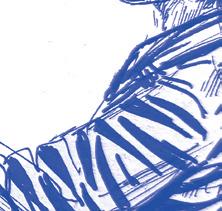





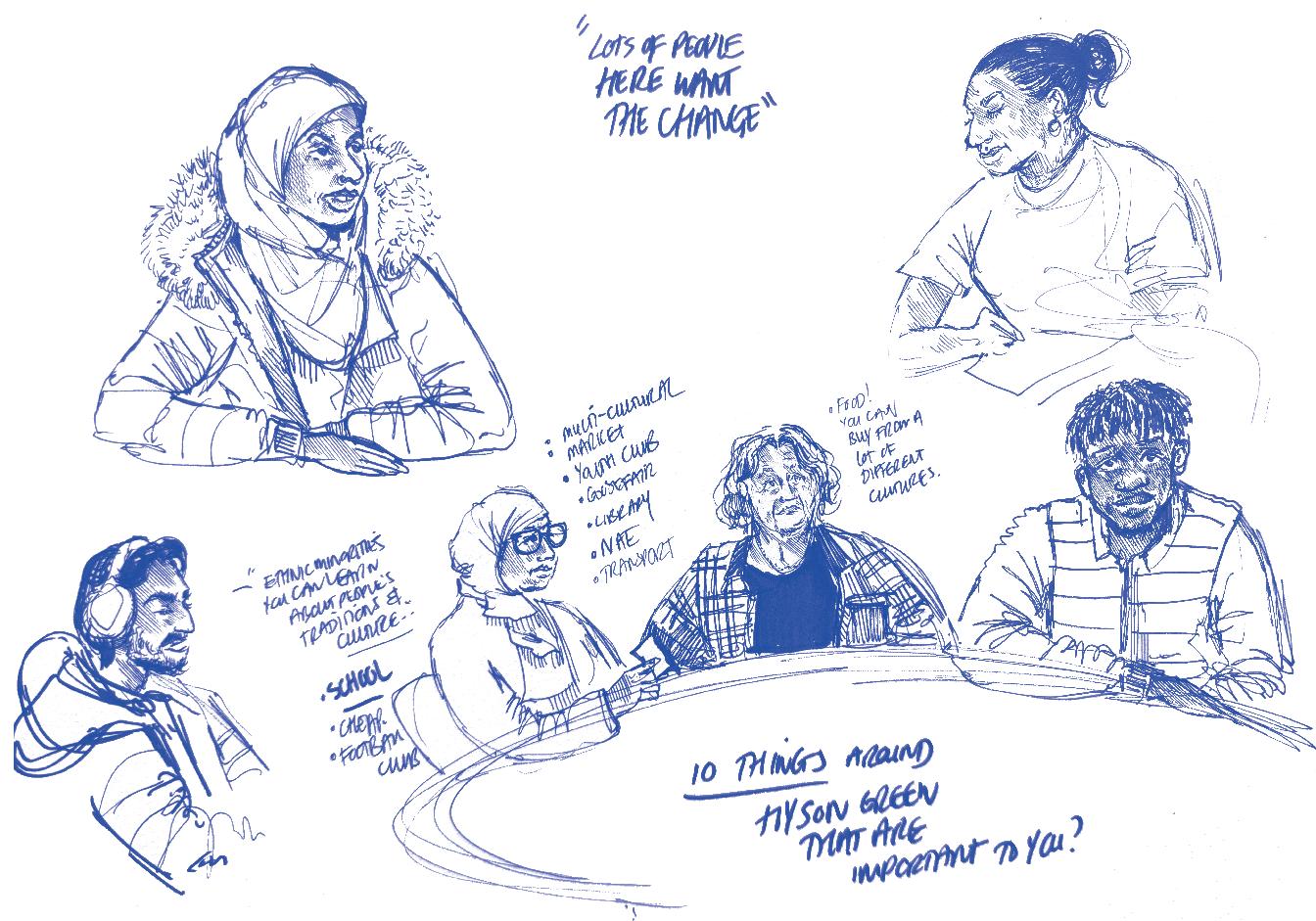
RESIDE 23/24
Purpose
Residency Programme
Citizen-Led Decision
Selection of artist-in-residence
OPEN 23/24
Purpose
Collective Exhibition
Citizen-Led Decision
Selection of participating artists
ART YOUR WAY (23/24)
Purpose
Neighbourhood-led activities & festivals
Citizen-Led Decision
Selection of projects
OPEN 24 WINNER
Purpose
Prize award for Open 24
Citizen-Led Decision
Selection of winner
BEYOND THE WALLS (24)
Purpose
Local storytelling through public murals
Citizen-Led Decision
Selection of characters and stories
OPEN 25
Purpose
Collective Exhibition
Citizen-Led Decision
Selection of participating artists
EXHIBIT 2024-26
Purpose
Four solo exhibitions
Citizen-Led Decision
Selection of artists
ART YOUR WAY (24/26)
Purpose
Community-led commissions
Citizen-Led Decision
Selection of projects
OPEN (25/26)
Purpose
Collective Exhibition
Citizen-Led Decision
Selection of participating artists
BEYOND THE WALLS (25)
Purpose
Local storytelling through public murals
Citizen-Led Decision
Selection of themes & characters
RESIDE (25/26)
Purpose
Residency Programme
Citizen-Led Decision
Selection of artist-in-residence
£10,000
RETURN is not just about financial decision-making: it also sustains longterm civic engagement. Participation levels across key projects indicate the depth of ongoing citizen leadership:
While many institutions engage communities through advisory groups or consultation, embedding citizens structurally within leadership remains an evolving practice in the cultural sector.
OECD research on participatory governance suggests that structured deliberative processes sustain engagement more effectively than one-off public engagement exercises.1
Many cultural organisations across the UK and internationally are exploring different power-sharing models, but RETURN stands out as a unique model of long-term, embedded leadership. Unlike temporary participatory initiatives, such as community consultations, artist panels, or advisory boards that make recommendations without decision-making authority, RETURN embeds citizens into the institution’s formal leadership structures, with real power over strategy, resources, and direction.
RETURN illustrates how participatory models can move beyond temporary initiatives into structurally embedded, long-term citizen leadership. Unlike the majority of participatory arts initiatives, RETURN has sustained citizen leadership across multiple years and programme areas, embedding community decision-making across funding allocations and curatorial programming.
Over 50 citizens have held decisionmaking power across RETURN’s programmes; selecting projects, commissioning artists, and allocating budgets.
60 residents from Hyson Green shaped the callout for Art Your Way before a citizen panel made the final selection.
RETURN also contributes to a broader global movement of institutions exploring new ways of sharing power, ensuring that decision-making is driven by the people they serve.
Long-term engagement is a challenge in participatory leadership, with many initiatives struggling to retain participants over time. RETURN’s VOICE Assembly, which has so far spanned 11 months (May 2024 – March 2025), has achieved strong retention rates, reflecting deep community trust and investment. This success is rooted in a carefully structured recruitment process that ensures diverse representation.
The VOICE Assembly was designed to mirror the diversity of Hyson Green, one of Nottingham’s most ethnically diverse and under-resourced neighbourhoods, ensuring that decision-making was truly representative of the communities that NAE serves.
Beyond the Walls engaged 360+ participants across two years, shaping public murals and storytelling decisions.
RETURN has sustained an extended engagement rate of 67.5%, meaning that even when participants miss sessions, they remain actively involved in leadership processes.
40 citizens were selected through a two-stage stratified sortition process. First, 12,000 invitation letters were sent to households across the local area. From the 304 individuals2 who responded, a final group was randomly selected, ensuring a balanced mix across age, gender, ethnicity, and socioeconomic background. The result was a leadership body that genuinely reflected the community it served.
These outcomes, recorded over the past three years, reinforce a simple truth: redistributing power strengthens institutions.
By embedding citizen power across strategy, funding and programming, RETURN has deepened trust, grown engagement, and strengthened our financial resilience.
Core funding has increased by nearly 50%.
NAE has quadrupled its reserves.
Overall engagement has grown by 22%.

Disability Representation:
20% of participants identified as disabled, closely aligning with community demographics.
Gender Representation:
50% women, 50% men (though non-binary respondents (3.6%) were not represented in the final group).
Age Groups:
1. 8-23 years: 20%
2. 24-29 years: 15%
3. 30-44 years: 30%
4. 45-64 years: 25%
5. 65+ years: 10%
Educational Background:
1. No formal qualifications: 20%
2. CSEs or equivalent (Level 1-2): 27.5%
3. A-Levels or equivalent (Level 3): 27.5%
4. Degree or higher (Level 4+): 25%
Ethnicity:
1. Asian or Asian British: 32.5%
2. Black or African or Caribbean British: 20%
3. Mixed/Multiple Ethnic Groups: 7.5%
4. White British: 15%
5. White Other: 12.5%
6. Other Ethnic Groups: 12.5%
Geographic Representation:
1. 70% from Hyson Green 2. 30% from surrounding areas (slightly below the 80% target, highlighting an area for future outreach improvement).
Retention Rates & Participation Impact: How Many Citizens Stay Engaged? The VOICE Assembly began with a cohort of 40 selected participants, and engagement has remained high despite external challenges, such as work, travel or study commitments.
ENGAGEMENT RATE (%)
87.5% of those who attended Residency 2 returned for Residency 3, demonstrating strong mid-term engagement.52.5% of the original 40 participants physically attended Residency 3, but the extended engagement rate rises to 67.5% when including those who are still actively involved but couldn’t attend.
Extended Engagement Rate refers to the percentage of citizens who remained actively connected to the process even if they could not attend a given residency in person. This includes those who contributed feedback remotely, stayed involved through check-ins or updates, or confirmed their intention to return to future sessions.
6 participants in Residency 3 remained engaged despite being unable to attend. Participants who couldn’t attend residencies remained actively engaged, contributing by sharing feedback and testimonies, participating in follow-up phone discussions, and participating in citizen-led panels in other NAE programmes.
Even as physical attendance declined across the four residencies, the extended engagement rate remained consistently high, holding steady at 67.5% in both Residency 3 and Residency 4.
Across all four residencies, a total of 97 citizen attendances were recorded, which demonstrates not only strong retention but also a rotation of leadership over time, as different individuals stepped forward at different moments.
RETURN’s model retains engagement beyond physical attendance, showing that participants continue to shape decision-making even when external factors prevent them from being present.
OECD research on citizen deliberation models suggests that structured, institutionally backed participatory processes tend to retain a majority of participants over time, around 50–70% in well-supported cases3. The VOICE Assembly’s extended engagement rate of 67.5% aligns with these global benchmarks, despite its longer 11-month timeline, which is a significant achievement for a cultural institution.
Many participatory arts initiatives suffer from high drop-off rates after early sessions due to their short-term, project-based nature. RETURN offers an alternative by embedding citizen leadership as a permanent feature of governance, ensuring that engagement continues even when individual participants cannot attend every session.
While participatory models report varied retention rates, RETURN is establishing a new benchmark for sustainable civic engagement in the UK cultural sector. The high extended engagement rate proves that even when participants aren’t physically present, they remain invested in shaping the institution’s future, making RETURN a leading model in long-term citizen leadership.
Citizen-Led Infrastructure: Beyond Programming
Overall building redesign
Decision-Making Role
Citizen panels shaped key design choices
Investment
N/A
Removal of street gallery
Decision-Making Role
Citizen-led decision
Investment N/A
Artist studios
Decision-Making Role
Citizens influenced design & purpose
Investment
£12,000
Café redevelopment
Decision-Making Role
Citizens shaped vision & layout
Investment
£50,000
Key takeaway
RETURN is contributing to a wider international movement of institutions embedding participatory leadership into physical and strategic transformation.
Case Study
Baltimore Museum of Art (USA) – a leading example of how participatory governance can reshape both strategic and physical transformation.4
RETURN is also broadening the demographic diversity of audiences at NAE.
In 2023/24, over 49% of NAE’s audiences identified as Black, Asian, Mixed, or Other Ethnic Groups.
46% identified as White, with 5% choosing not to respond.
In 2024/25, over 53% of NAE’s audiences identified as Black, Asian, Mixed, or Other Ethnic Groups.
33% identified as White, with 14% choosing not to respond.
Compared to regional demographics
East Midlands: 14% non-white
Nottingham: 34% non-white
We have remained consistent with the actual number of white audiences attending NAE but have grown Global Ethnic Majority audiences by 48% in the last 12 months:
2023/24 – 17,910 white, 19,078 GEM, 1,947 unknown
2024/25 – 17,619 white, 28,297 GEM, 7,474 unknown
Also worth noting that audiences numbers overall (as counted by our footfall counter in our main entrance) increased by 22% from 43698 (22/23) to 53,391 (24/25)
Key takeaway
This proves that co-leadership models do not weaken institutions, rather, they strengthen public trust and participation, driving greater engagement and increased visitor numbers.
4 Baltimore Museum of Art (2021).
BMA Receives $150,000 Grant from the Andrew W. Mellon Foundation to Launch CommunityFocused Research Initiative. https://artbma.org/about/press/release/bma-receives-150000-grantfrom-the-andrew-w-mellon-foundation-to-launch-community-focused-research-initiative

Implementing a leadership transformation was never about applying a fixed model. It has always been about building a living framework that can evolve through practice, reflection, and adaptation. The transition to citizen-led decision-making is not a one-time intervention but an ongoing commitment to redistributing power, deepening participation, and embedding long-term accountability.
At New Art Exchange (NAE), this process has been shaped by the VOICE Assembly, a dedicated body in which citizens take the lead in identifying priorities, challenges, and opportunities for cultural leadership. Rather than being an advisory group, the VOICE Assembly co-creates leadership with the community.
The recommendations that follow offer practical, adaptable steps for embedding citizen leadership deeply and sustainably within other institutions. While these recommendations have emerged from NAE’s own journey, each institution must define its own version of citizen-led decision-making based on its unique history, communities, relationships, and mission.
Introducing the Recommendations & NAE’s Response
This section presents the core recommendations from the VOICE Assembly, outlining:
What has been achieved so far.
What is currently in progress.
What still needs to happen to fully embed citizen leadership at NAE.
Alongside each recommendation, we explain how these insights have shaped NAE’s strategic direction and what long-term commitments are being made to sustain and expand citizen-led decision-making. This process is not about symbolic consultation, it is about accountability and requires significant action by the institution.
These recommendations are not just statements of intent. They represent concrete steps that NAE is taking towards ensuring that citizen leadership is a fundamental pillar of our institutional practice.
Reframing the Questions: How We Shaped Our Key Focus Areas
Reshaping leadership structures within cultural institutions is not a predetermined process, but one which requires continuous learning, adaptation, and co-creation. RETURN was never designed as a rigid blueprint but should be understood as a living framework, evolving through practice, reflection, and deep engagement with citizen leaders.
The VOICE Assembly became a critical inflection point in this journey. Rather than imposing a fixed agenda, it provided a space for citizen leadership to emerge organically. Through deliberation, lived experience, and facilitated discussions, participants began shaping three fundamental questions that would guide RETURN’s development.
These questions were not dictated from the outset. They crystallised over two years of sustained, and sometimes difficult, institutional change. This wasn’t a quick consultation or an academic exercise. It was a deliberate, long-term process of shifting power, challenging internal assumptions, and learning how to lead differently. That time was essential. It allowed the questions to emerge from genuine deliberation and lived experience, rather than being imposed top-down. They became the anchors of RETURN not because they were theorised in advance, but because they were earned through practice, patience, and deep trust-building.
While these questions have shaped RETURN’s trajectory at NAE, they now serve as a flexible guide for others: an invitation to define citizen-led decision-making in ways that are grounded in their own communities, structures, and realities.
Institutions at different stages of transformation may find similar questions surfacing, or they may need to shape entirely new questions based on their own structural realities.





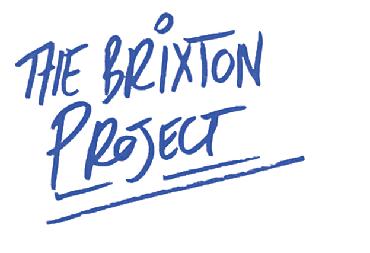

The three guiding questions that now form the foundation for the next phase of RETURN at NAE are:
The Assembly examined NAE’s responsibility to ensure that citizen leadership is not just an aspirational idea but a deeply embedded structural reality. This required confronting power imbalances and identifying mechanisms for sustained leadership redistribution.
Key priorities identified:
Formalising citizen leadership within strategic planning and decision-making.
Ensuring participatory leadership shapes institutional priorities including programming, funding allocation, and governance structures.
Developing long-term support systems, such as training for citizen leaders, compensated roles, mentorship structures and clear pathways for progression, so that citizen leadership extends beyond advisory roles into genuine decision-making authority.
How can RETURN go beyond an institutional model, and become a movement that reimagines leadership across the sector, influencing funders, policymakers, and peer institutions? The VOICE Assembly recognised that for citizen leadership to thrive, the structural barriers that limit it must be dismantled.
Key areas for advocacy:
Funding reform: Advocating for financial models that support long-term participatory leadership.
Policy change: Embedding citizen-led decision-making into funding criteria and governance frameworks across the cultural sector.
Sector-wide collaboration: Encouraging cultural institutions to commit to power-sharing as a structural necessity, not as a temporary experiment.
What Can Local Communities and Grassroots Organisations Do?
Citizen leadership is not just about reforming existing institutions. It is about creating environments that enable communities to lead cultural life on their own terms. The VOICE Assembly explored how grassroots organisations, artists, and residents could shape cultural initiatives independently and in collaboration with NAE.
Key questions that emerged:
How can communities build their own leadership structures to sustain cultural work?
What resources and support are needed for independent grassroots initiatives?
How can institutions like NAE act as enablers rather than gatekeepers?
These guiding questions were not conceived in theory, they were shaped through practice. They will continue to evolve as RETURN deepens its commitment to citizen leadership within NAE while also informing broader sector-wide transformation.
The framework is not static. It must be continuously tested, adapted, and strengthened through practice. Leadership shift is not a fixed endpoint. It is an ongoing process of redistribution, reflection, and refinement. These questions will continue to guide how RETURN is embedded, sustained, and expanded over time.

The recommendations from the Citizen Assembly are grouped into three areas, distinguishing between what NAE will implement, what it will advocate for, and what communities can take forward themselves. NAE’s role is to embed systemic change by ensuring that cultural leadership is shared and communities are empowered to drive transformation.
NAE directly implements activity that expands access to culture, deepens partnerships, and provides opportunities for community-led creativity. These commitments place citizens at the heart of programming and decision-making.
Recommendations
Expand Community Outreach and Engagement
Develop Accessible Cultural Programmes
Launch and host a biannual children’s exhibition to platform and celebrate emerging talent from Hyson Green.
Expanding the number and scope of free programmes to reflect the needs and interests of diverse communities.
Support Emerging ArtistsLaunching mentorship and coaching programmes to support the professional growth of emerging artists.
Provide Spaces for Artistic and Social Collaboration
Enhance Partnerships with Local Organisations
Providing up to three days of free space annually for Hyson Green-based charities and artist collectives, enabling grassroots creativity and social action.
Formalising local partnerships through Memorandums of Understanding (MOUs) and shared objectives.
Develop a long-term community leadership programme to train and support local citizens in co-creating and leading cultural initiatives at NAE.
Secure funding to provide free children’s meals as part of our free Saturday Art Clubs, reducing barriers to participation.
Developing an international artist residency programme, connecting Hyson Green creatives to global networks.
Establish a community-driven cultural hub within NAE, offering dedicated space, funding, and resources for grassroots-led artistic and social initiatives.
Facilitating the creation of a Hyson Green consortium of local organisations, hosted at NAE, to strengthen collaboration and advocacy.
Summary
NAE is embedding long-term change by ensuring greater accessibility, artist development, and community-led collaboration. These commitments reinforce shared leadership, ensuring that cultural institutions evolve beyond consultation into spaces where citizens co-create and co-govern cultural initiatives.
NAE does not engage in continuous lobbying but commits to advocating for five key priorities that emerge from the Citizen Assembly. These priorities focus on protecting creative spaces, embedding sustainability, expanding access to arts education, strengthening arts in local policy, and ensuring community representation in decision-making.
Advocacy Area
Protect and Sustain Creative Spaces in Hyson Green
Champion Environmental Sustainability in Cultural Spaces
Expand Equitable Access to Arts Education and Training
Strengthen the Role of Arts and Culture in Local Policy
NAE’s commitment within the first 18 months

NAE will advocate for the development of a creative quarter, connecting cultural organisations and creative spaces. Where possible, it will engage decision-makers to explore this vision.
NAE will integrate sustainability principles into commissioned programmes in Hyson Green and use this as a model to advocate for greener cultural programming.
NAE will embed arts learning in partnership with local schools and youth organisations to expand creative education.
NAE will highlight the impact of local cultural initiatives through public communications and sector networks, advocating for sustained investment in community-led cultural programmes.
Facilitate Community Representation in Cultural Decision-MakingNAE will host discussions and forums to share its citizen-led approach and advocate for greater community representation in cultural planning.
Summary
NAE leverages its influence and platform to ensure that cultural advocacy remains rooted in the needs of Hyson Green’s residents, artists, and grassroots organisations, reinforcing the role of arts in shaping the neighbourhood’s future.
Foster Community Cohesion Through Cultural Activities
NAE does not lead community action but enables conditions for grassroots-led initiatives to flourish. Below are five key areas where communities can drive change, supported by NAE through space, resources, and connections.
Develop an annual festival calendar that celebrates Hyson Green’s cultural diversity, led by local organisations. NAE will support coordination, provide promotional space, and help connect grassroots groups to resources.
Create Platforms for Communication and Collaboration
Establish Accessible Meeting Spaces
Promote Intergenerational Activities
Encourage Active Participation in Local Decision-Making




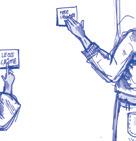




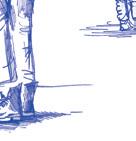






Support the establishment of a community-led storytelling platform in NAE’s café, where residents can meet weekly to share local news, events, and histories. NAE will provide space, promote the initiative, and facilitate the first meeting, but the platform will be self-sustained by the community.
Provide up to three days of free space annually for Hyson Green-based charities and artist collectives, enabling grassroots creativity and social action. NAE will advocate for additional independent community spaces in the area.
Facilitate one day a year focused on creating connections between local youth organisations and elder-led community groups, encouraging knowledge-sharing and cultural exchange. NAE will help convene the gathering, but activities will be designed and run by participants.
Develop a long-term community leadership programme to train and support local citizens in co-creating and leading cultural initiatives at NAE. The programme will equip community members with the skills and networks to shape decision-making beyond NAE’s work.
NAE provides infrastructure, space, and facilitation to enable grassrootsled cultural initiatives. By doing so, it ensures that communities are not just participants but co-creators of Hyson Green’s cultural landscape. These insights serve as a roadmap for NAE and any organisation seeking to embed shared leadership and participatory decision-making into its governance. They also point to the ongoing challenges of power redistribution, institutional adaptation, and sustaining engagement over time. Embedding RETURN requires institutions to commit to structural change, but what happens when this model is put into practice? The impact at NAE proves that shared leadership is not only possible, but it actually strengthens institutions in measurable ways.



Across the world, institutions are exploring new ways to share leadership with the communities they serve. Participatory budgeting in Paris has empowered citizens to allocate cultural funding. Deliberative democracy models like G1000 in Belgium have broadened public policy influence. Community-led museum models in Brazil and Panama are reshaping curatorial practices. Each of these innovations has strengthened citizen engagement, yet most remain limited to influence rather than leadership. However, most of these models focus on advisory roles, rather than fully embedding citizen-led decision-making into leadership structures. RETURN bridges this gap, creating a permanent, institutionalised model where citizens hold leadership authority alongside executives and boards.
RETURN builds upon innovations in other institutions to ensure that citizen leadership is not just a moment of engagement, but a permanent structural shift. While many participatory models create opportunities for public involvement, RETURN is one of the few models to fully institutionalise citizen-led decision-making within the core of leadership, ensuring that power-sharing is systemic, sustainable, and embedded within institutional structures.
UNITED KINGDOM RETURN (NAE)
SPAIN PARTICIPATORY BUDGETING FOR CULTURE
The table below highlights how RETURN differs from other global Citizen-led decision-making models:
PANAMA
Model
Museum of Freedom & Human Rights
Decision-Making Structure
Citizen co-creation of exhibitions & institutional decisions
Sector Focus
Museums & Public Memory
Who Holds Leadership Authority?
Shared Leadership
Leadership Scope
Institutional model integrating citizen-led decision-making
Unique Features
Marginalised communities actively shape institutional decisions but do not co-lead the institution.
Model
Participatory Budgeting for Culture
Decision-Making Structure
Citizens decide cultural funding priorities
Sector Focus
Cultural Funding & Municipal Arts
Who Holds Leadership Authority? Budget Control
Leadership Scope
Citizen-led financial decisionmaking
Unique Features
Regularly redistributes cultural budgets through democratic deliberation, but does not influence institutional leadership.
Model
Ukombozi Library & Cultural Centre
Decision-Making Structure
Community-governed cultural spaces
Sector Focus
Libraries & Cultural Institutions
Who Holds Leadership Authority?
Shared leadership with local residents, artists, and civic leaders
Leadership Scope
Decentralises leadership for grassroots governance
Unique Features
Local communities manage cultural and library spaces autonomously.
UNITED KINGDOM Model
RETURN (NAE,UK)
Decision-Making Structure
Three-Pillar Leadership Model (Citizens, Executives, Board of Trustees)
Sector Focus
Cultural Institutions
Who Holds Leadership Authority?
Shared Leadership Between Citizens, Executives & Board of Trustees
Leadership Scope
Restructures leadership to embed citizen-led decision-making
Unique Features
Only model where citizens hold a permanent leadership role alongside executives and the Board of Trustees, embedding structural power-sharing at the core of cultural institutions.
TAIWAN
Model
vTaiwan Digital Leadership Model
Decision-Making Structure
AI-driven deliberative democracy for cultural & civic decisions
Sector Focus
Civic & Cultural Policy
Who Holds Leadership Authority?
Citizens have real decision-making power
Leadership Scope
Public decision-making in digital and cultural policy
Unique Features
First AI-powered citizen-led decision-making model.
Model
Paris Participatory Budget
Decision-Making Structure
Citizens vote on municipal budget allocation
Sector Focus
Urban Planning, Culture
Who Holds Leadership Authority?
Direct Financial Control
Leadership Scope
Citizen participation in municipal decision-making
Unique Features
Citizens control a percentage of cultural funding but do not shape leadership structures.
Model
G1000
Decision-Making Structure
Randomly selected citizens deliberate & propose policies
Sector Focus
National & Local Leadership
Who Holds Leadership Authority? Advisory
Leadership Scope
Public engagement in policy but no leadership authority
Unique Features
High-level policy influence but without direct leadership roles.
Model
Museums of the Future
Decision-Making Structure
Citizen councils co-curate & influence museum programming
Sector Focus
Museums & Heritage
Who Holds Leadership Authority? Institutional Power-Shift
Leadership Scope
Restructures museum leadership to integrate citizen voices
Unique Features
Citizens actively shape exhibitions and programming decisions but do not hold institutional leadership roles or share authority in executive decision-making.
Model
Baltimore Museum of Art
Decision-Making Structure
Community-led museum acquisition & curation
Sector Focus
Museums & Visual Arts
Who Holds Leadership Authority?
Artists & citizens influence
leadership
Leadership Scope
Restructures museum decisionmaking through citizen involvement
Unique Features
First major US museum to integrate citizen voices in governance, but without shared leadership authority.
Model
BlakDance & ILBIJERRI Theatre
Decision-Making Structure
First Nations-led cultural leadership
Sector Focus
Performing Arts & Indigenous Cultural Institutions
Who Holds Leadership Authority?
Full self-governance by Indigenous communities
Leadership Scope
Indigenous sovereignty & decolonial leadership outside dominant institutions
Unique Features
Indigenous artists fully control leadership & decision-making.
RETURN’s Unique Contribution to the Global Movement
RETURN contributes to a growing global movement for leadership transformation by offering a distinct, fully embedded model grounded in practice:
Permanent Leadership Transformation – RETURN does not create advisory panels; it permanently redistributes leadership authority to citizens.
Scalability – RETURN is designed to be adopted by institutions worldwide, unlike localised participatory models.
Sustainability – RETURN is embedded within leadership, funding, and institutional frameworks, rather than relying on temporary engagement initiatives.
Accountability – RETURN ensures permanent citizen involvement, preventing institutions from reverting to top-down decision-making.
Many cultural institutions recognise the need to develop more inclusive leadership, but the challenge is making this shift sustainable and structurally embedded. RETURN provides a practical, institutionally integrated model that ensures citizen-led decision-making is not just a moment of engagement but a fundamental part of how leadership operates.
RETURN does not stand alone. It strengthens and advances the global movement for leadership transformation. The next step is for institutions to move beyond consultation into real and permanent power-sharing, ensuring leadership structures truly reflect the communities they serve.






Transforming leadership is not about making empty promises: it’s about creating structures that make power-sharing a permanent reality. When I first envisioned RETURN, I strongly believed that it wasn’t enough to simply talk about change.
It needed to be real, sustainable, and institutionalised, something that wouldn’t be dismantled with the next change in leadership. RETURN is more than an idea; it’s a tested leadership model designed to embed citizen-led decisionmaking at every level of an institution.
I knew that moving from concept to practice would require more than just good intentions; it would require a clear, functional structure that could adapt over time and continue to meaningfully engage the community. This wasn’t about offering yet another consultation model. This was about redistributing power within the fabric of NAE, ensuring lasting change.
At the core of RETURN is the Three-Pillar Leadership Model, designed to make leadership participatory, accountable, and deeply embedded into the institution’s strategic fabric. The three pillars work together to balance authority, drive institutional change, and safeguard the integrity of citizen-led decision-making.
The first pillar places communities at the center of programming, strategy, and institutional prioritisation. When NAE first introduced this concept, I was faced with a question: how do we really shift power and not just pay lip service to community involvement? The answer came through the Citizen Assembly, which gave people real influence in how we approached programming, curating, and institutional priorities. I had to trust the communities to lead, and the results were astonishing. As citizens began to lead, they didn’t just influence the direction of the institution, they became its driving force.
The second pillar shifts from hierarchical top-down control to facilitation, ensuring that participatory leadership is operationally viable. As a leader, the hardest part was stepping away from control and learning to facilitate rather than dictate. I had to let go of traditional decision-making, but in doing so I quickly learned that leadership flourishes when it is shared. By becoming a facilitator I gave space for others to lead, and in return, our leadership became more inclusive and resilient.
The third pillar ensures long-term accountability, preventing leadership imbalances from developing and reinforcing sustainability. The Board of Trustees is the safeguard, ensuring that power remains distributed and that decisions continue to be made collectively. I saw first-hand how a shared vision between the board and the assembly kept us accountable, not only to each other but to the communities that we serve. This pillar is what makes RETURN sustainable; it prevents any single group from monopolizing power and ensures that we adapt as we grow.
The three pillars do not operate in isolation, they interact, challenge, and reinforce one another, ensuring that power remains distributed and that leadership remains dynamic. Through this model, RETURN goes beyond symbolic engagement and becomes a permanent institutional reality. For participatory leadership to succeed, institutions need leadership structures that meaningfully distribute power, ensure accountability, and sustain long-term engagement. The Three-Pillar Leadership Model achieves this by shifting leadership from traditional hierarchies of power to shared decision-making, ensuring a dynamic, evolving leadership process.
This model functions not as a rigid structure, but as a continuous flow of leadership, where power moves dynamically between the three pillars. New Art Exchange (NAE) facilitates this process, ensuring that: Citizens drive strategic decisions through the Citizen Assembly. Executives enable and implement change rather than dictate it.
The Board of Trustees safeguards leadership integrity without stalling participatory leadership.
By embedding these principles, RETURN ensures leadership remains accountable, adaptive, and citizen-led.


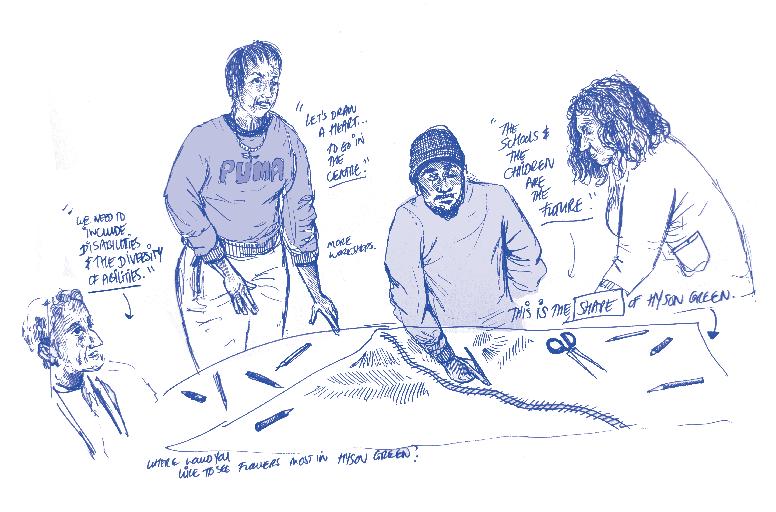
The Citizen Assembly is the foundation of RETURN’s leadership model, granting real decision-making authority rather than acting as an advisory group.
Key Functions:
Strategic Leadership –Citizens influence programming, policy, and institutional priorities.
Inclusive Representation – Random selection ensures leadership reflects diverse community voices.
Deliberative Decision-Making – Structured discussions balance community needs with long-term sustainability.
Accountability Mechanism – The Assembly ensures institutional decisions reflect community interest, not internal hierarchies.
Challenges & Considerations:
How can institutions keep participation dynamic, avoiding a static leadership group?
What safeguards prevent citizen-led decision-making from being undermined by institutional inertia?
RETURN demonstrates that when citizens hold real power, institutions become more accountable, relevant, and responsive. However, citizen leadership must be resourced, supported, and structurally embedded for leadership to be sustainable.
In a participatory model, executive leadership shifts from control to facilitation, ensuring that citizen-led decision-making is viable and impactful. This requires a fundamental redefinition of leadership roles.
Key Functions:
Facilitating Citizen-Led Decision-Making – Ensuring the Citizen Assembly has full access to institutional knowledge, data, and resources.
Translating Strategy into Action – Turning citizen-defined priorities into practical, operational plans.
Managing Organisational Sustainability – Balancing participatory leadership with financial planning, staffing, and compliance.
Acting as a Bridge – Aligning Citizen Assembly decisions with oversight from the Board of Trustees and broader sector collaborations.
Challenges & Considerations:
How can executive leadership evolve without diminishing institutional expertise?
What structures prevent executives from informally reclaiming decisionmaking power?
When executive teams prioritise facilitation over control, institutions become more agile, inclusive, and resilient. However, this requires a significant cultural shift, continuous training, and a commitment to unlearning modes of hierarchical leadership.







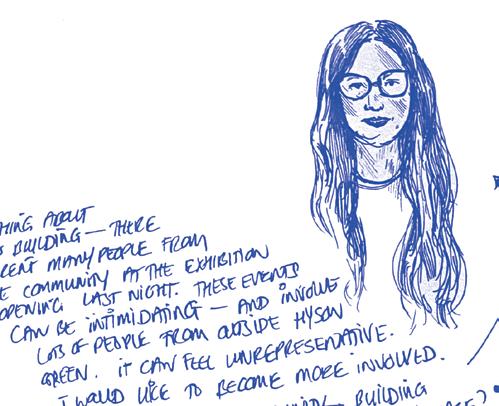















The Board of Trustees safeguards participatory leadership, preventing institutional stagnation and leadership failures. Unlike traditional boards that concentrate power, the RETURN framework reframes board roles to protect participatory leadership as a fundamental part of the institutional structure.
Key Functions:
Long-Term Leadership Stability – Ensuring citizen-led decision-making remains embedded through changes in executive leadership or shifts in funding.
Accountability Mechanism – Overseeing implementation without interfering in daily decision-making processes.
Ethical & Legal Oversight – Maintaining financial, regulatory, and structural compliance while preserving citizen-led decision-making.
Preventing Institutional Drift – Protecting against a return to top-down leadership by reinforcing Citizen-led decision-making in institutional policies.
Challenges & Considerations:
How can boards stay connected to participatory leadership, avoiding detachment from citizen-led decision-making?
What safeguards will prevent boards from reclaiming traditional authority over time?
In the RETURN model, the Board functions as a steward of participatory principles, rather than a controlling authority. This ensures citizen-led decisionmaking remains central, while financial and legal stability are upheld.

The power of the Three-Pillar Model lies in how these elements interact, each reinforcing and challenging the others to prevent power from concentrating in any single area:
Citizen Leadership drives strategy and decision-making.
Executive Leadership enables implementation and ensures sustainability.
The Board safeguards leadership integrity and long-term accountability.
Rather than a rigid hierarchy, this forms an evolving feedback loop, where leadership continuously flows between citizens, executives, and the board.
A Call to Action: Strengthening Participatory Leadership Beyond NAE
RETURN has proven that citizen-led decision-making is viable and impactful, but realising its full potential depends on sector-wide reform. Many legal and funding structures still insist upon executive and boardled models of institutional governance, limiting the ability of many institutions’ to transition to co-leadership models.
This is a vital opportunity for leadership transformation. Institutions, funders, and regulatory bodies (including the Charity Commission) must work together to recognise, support, and institutionalise citizen leadership.
NAE’s journey demonstrates that change is possible. The next challenge is making it scalable, sustainable, and systemic across the cultural sector.
Embedding citizen leadership is not a single action but a structured journey. The Six Phases of RETURN provide institutions with a clear, step-by-step roadmap to transition from traditional governance to an embedded leadership model. The six phases of RETURN: RECLAIM, ELEVATE, TRANSFORM, UNLEASH, RENAISSANCE, and NEXUS, map the journey from traditional leadership structures to citizen-led decision-making. These phases ensure that power shifts are not just symbolic but lead to deep, sustainable transformation.
This framework outlines the six phases required to embed RETURN as a permanent leadership transformation. It serves as a roadmap for any organisation committed to citizen-led decision-making, moving from the initial reorganising of power structures to securing RETURN as institutional legacy. Once Phase 6 is reached, institutions will have the stability to expand their vision beyond their own structures and contribute broad, sector-wide change.
At NAE, we have fully implemented the first three phases, RECLAIM, ELEVATE, and TRANSFORM, embedding citizen-led decision-making into the institution. NAE is now in Phase 4: UNLEASH, which focuses on deepening citizen leadership across programming, policy, and funding. The next steps, RENAISSANCE and NEXUS, will focus on ensuring RETURN is permanently embedded within the institution and expanding its influence across the sector.
The following roadmap is designed for any institution ready to undertake this journey. While our experiences of implementing RETURN at NAE have informed this framework, each phase is offered as a universal guide for embedding citizen-led decisionmaking in cultural institutions worldwide.

SHIFTING POWER TO CITIZENS
SECURING RETURN AS INSTITUTIONAL LEGACY
EMBEDDING CITIZEN LEADERSHIP AS A NORM
REDEFINING THE ROLE OF CULTURAL INSTITUTIONS
MAKING CITIZEN LEADERSHIP PERMANENT
EXPANDING CITIZEN-LED DECISION-MAKING
Cultural institutions often claim to serve their communities, yet decision-making remains centralised. True leadership redistribution starts when institutions acknowledge their power structures and take steps to actively shift authority to citizens.
What This Phase Requires
A reckoning with power. Identifying where decisions are made and who is excluded.
Moving beyond consultation. Transitioning from gathering input to sharing leadership.
Rebuilding trust. Proving commitment to longterm change, not just short-term engagement exercises.
How to Implement This Phase
Conduct an audit of decision-making power across all parts of the institution and identify gaps in representation.
Introduce citizen-led input into strategic decision-making.
Embed participatory decision-making into institutional priorities.
Why This Matters
Many institutions pilot community-led initiatives, but they often remain temporary. Elevate ensures that citizen leadership is not just a project, but is structurally embedded.
What This Phase Requires
Formalising citizen leadership roles. Moving from informal influence to recognised leadership positions.
Institutional culture shift. Supporting staff, board members, and executives to align with principles of shared leadership.
New leadership structures. Redistributing decision-making authority in tangible ways.
How to Implement This Phase
Formalise leadership roles for citizens within institutional structures.
Conduct internal training to align staff and board members with shared leadership.
Shift from executive-led to citizen-led decisionmaking.
Why This Matters
Embedding citizen leadership is not enough. Institutions must ensure these structures become permanent, preventing a return to top-down leadership models and ensuring consistency even through changes in executive leadership.
What This Phase Requires
Embedding citizen-led decision-making into policy. Protecting power-sharing over time.
Developing accountability structures. Ensuring decision-making is upheld and transparent.
Building long-term sustainability. Proving that models of citizen-led decision-making strengthen institutions.
How to Implement This Phase
Institutionalise citizen leadership in policies and governance structures.
Establish transparent accountability frameworks for decision-making processes.
Build financial sustainability by embedding the citizen-led model into the core institutional budget.
– EXPANDING CITIZEN-LED DECISION-MAKING
Why This Matters
Now that citizen leadership is embedded in the institution, the next step is realising its full potential. Unleash is about ensuring decisionmaking moves beyond institutional walls and empowers citizens to actively shape cultural programming, policy, and funding priorities.
What This Phase Requires
Encouraging risk-taking. Creating a leadership culture where citizen-led ideas can challenge conventional institutional practices.
Letting go of institutional ego. Ensuring institutions follow the direction set by citizen leadership.
Expanding the definition of success. Moving beyond traditional metrics to measure impact through community transformation.
How to Implement This Phase
Strengthen citizen-led decision-making across programming and funding.
Introduce citizen-led decision-making roles beyond formal structures like assemblies.
Reallocate resources and priorities to support citizen-generated projects and ideas.
Why This Matters
Institutions must remain dynamic, evolving beyond traditional models. Renaissance ensures RETURN stays relevant and continuously adaptable to meet changing community needs.
What This Phase Requires
Reimagining priorities. Ensuring that citizen leadership directly influences programming and funding.
Planning long-term sustainability. Embedding citizen leadership into the institution’s long-term strategy.
Evolving institutional identity. Reflecting leadership shifts in how the institution presents itself and collaborates with others.
How to Implement This Phase
Extend citizen leadership principles into cultural production, artist development, and funding structures.
Embed citizen leadership into long-term strategic planning.
Redefine success by measuring community impact rather than traditional arts-sector metrics.
Why This Matters
Nexus marks the point where RETURN becomes an institutional legacy. Institutions must ensure citizen leadership remains embedded and drives sector-wide transformation.
What This Phase Requires
Protecting citizen-led decision-making. Safeguarding citizen-led structures to ensure they remain embedded through leadership transitions and institutional change.
Building a network of adopters. Creating alliances with other institutions to exchange knowledge and spread citizen-led decision-making.
Engaging policymakers and funders. Advocating for broader policy and funding reforms that remove barriers to embedding citizen-led decision-making.
How to Implement This Phase
Establish permanent structures to sustain citizen leadership across leadership succession, funding, and decision-making.
Form networks with other institutions to expand the impact of RETURN.
Advocate for sector-wide policy and funding reforms to embed citizen-led decision-making as the new norm.

The Framework of Fives is the structured implementation process for RETURN, ensuring institutions move beyond ambition to permanent transformation. While the VOICE Assembly creates a direct space for citizens to lead, this Implementation Framework provides the step-by-step process for organisations in embedding, scaling, and sustaining citizen-led decision-making across all levels of institutional leadership.
This framework is structured around five key elements, each of which addresses a crucial aspect of the transition toward citizen-led decisionmaking. Together, these elements ensure that RETURN is fully embedded, institutionalised, and scaled for long-term impact.


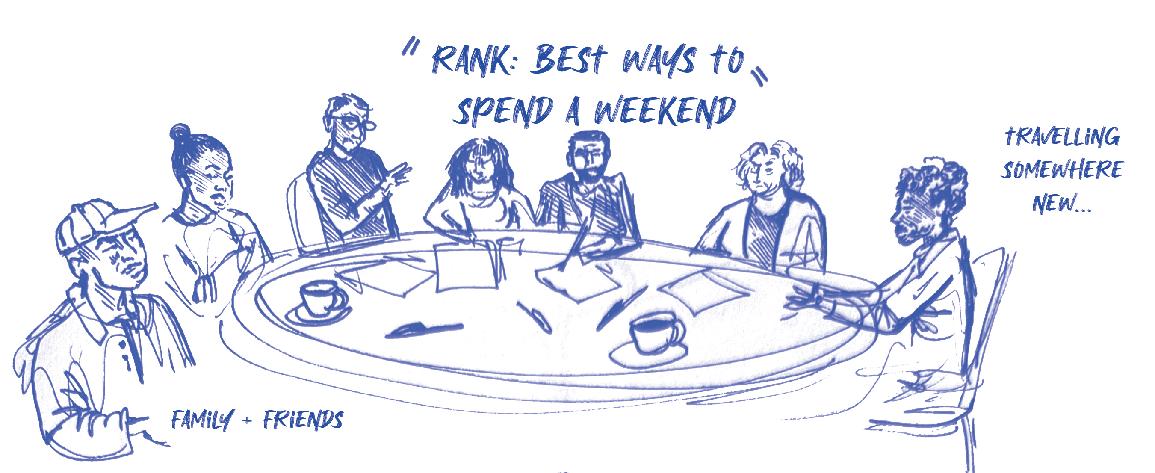
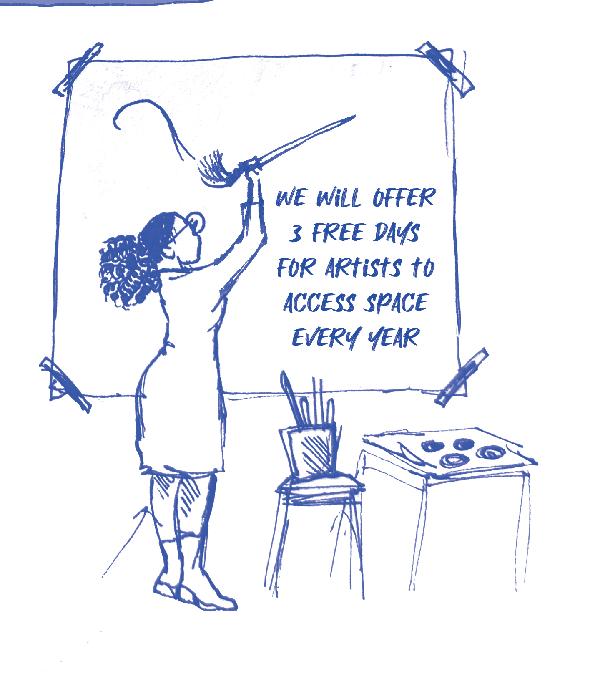



Deliberation is not just about discussion: it is a structured leadership practice that ensures decision-making is equitable, inclusive, and shaped by collective intelligence. Unlike advisory models, where recommendations are gathered but leadership remains unchanged, deliberation enables citizens to directly influence institutional leadership.
To make this possible, RETURN has developed a deliberative approach that combines structured discussion, anonymous consensus-building, and iterative decision-making. This ensures that all voices contribute to the process without hierarchy, persuasion, or dominant influence.
At its core, RETURN’s deliberation process is guided by five key principles:
RETURN’s deliberation model is not about gathering feedback. It is about redistributing leadership authority and ensuring that decision-making is shaped collectively.
Rather than citizens offering opinions that institutional leaders may or may not consider, RETURN embeds deliberation within leadership structures, meaning that participants are not just advising: they are leading.
The process is designed to remove traditional gatekeeping and ensure that citizens play a meaningful role in shaping institutional direction. By embedding deliberation within RETURN’s leadership model, decisions are not made for communities but with them and by them.
Anonymous voting creates a fair, open, and balanced decision-making process.
Voting is about the collective, not individuals. Instead of open voting, which can be influenced by group dynamics, participants vote privately using a Green/Orange/Red system to indicate their level of support for proposals. The room sees the overall consensus, not individual choices. When votes are tallied, the collective result is represented visually (e.g., a green dot on an artist’s name), showing general agreement without revealing how many or who voted in a particular way.
This method prevents bias or pressure, allowing participants to reconsider and evolve their perspectives over time. By integrating anonymous voting into deliberation, RETURN ensures that leadership decisions are driven by collective intelligence rather than individual influence.
Deliberation is Iterative & Builds Consensus Over Time
Deliberation is designed to build leadership decisions through structured rounds of collective sense-making rather than immediate debate-driven conclusions.
Deliberation begins with open discussion, where participants explore different viewpoints and challenge assumptions.
First anonymous vote – The room sees the collective direction, but no final decision is made.
Deliberation continues – Participants refine arguments, reconsider perspectives, and adapt their thinking.
Subsequent voting rounds refine the outcome, ensuring that leadership decisions emerge organically from deep engagement rather than being determined by simple majority rule.
This process prevents polarisation, forced compromises, or rushed conclusions. Instead, leadership decisions evolve through meaningful engagement and shared understanding.
Discussion is Structured, Not Free-Flowing RETURN integrates a structured deliberation framework to ensure that discussions are focused, purposeful, and connected to leadership priorities.
Rather than open-ended debate, deliberation is structured around three provocations:
Viability. Is this decision feasible in practice?
Engagement. Does this decision align with community and institutional values?
Potential. Does this decision allow room for growth and development?
Facilitation ensures balance. The process prevents dominant voices from directing discussions, ensuring that all perspectives are considered equitably.
By structuring deliberation in this way, citizenled decision-making becomes both strategic and actionable rather than reactive or directionless.
Leadership Decisions Are Embedded, Not Just Collective Recommendations
In many participatory models, deliberation ends with recommendations that executive leaders can choose to accept or ignore. In RETURN, deliberation is a leadership function, meaning that decisions made through this process are embedded into institutional direction.
Decisions that emerge from deliberation directly inform RETURN’s leadership model.
Outcomes are not advisory, they are institutionalised as part of RETURN’s leadership structure.
This ensures that Citizen-led decision-making moves beyond participation into real transformation.
By treating deliberation as a core part of institutional leadership, power-sharing is not merely symbolic. It is real, operational, and embedded in leadership structures.
Conclusion: Deliberation as a Leadership Practice
Through these five principles, RETURN has developed a deliberation model that goes beyond discussion. It is a leadership tool that enables institutions to share power, build collective intelligence, and centre citizen leadership.
By combining structured discussion, anonymous voting, iterative consensus-building, and embedded decision-making, RETURN ensures that deliberation is:
Equitable. No single voice dominates.
Evolving. Consensus is built over time.
Actionable. Decisions are embedded into leadership structures.
This approach transforms deliberation from a moment of participation into a core leadership practice, reinforcing RETURN as a new and innovative model for citizen-led decision-making in the cultural sector.
RETURN is not a one-time intervention rather, it is a fundamental restructuring of leadership. The model follows five key phases, adaptable depending on the institution’s size, governance structure, and readiness for change.
Once institutions understand their leadership gaps, they must develop a strategy to embed RETURN into governance structures.
What leadership roles will citizens hold? (Decision-making over programming? Resource allocation?)
STEP ONE: REFLECTION – MAPPING POWER AND IDENTIFYING BARRIERS
Most institutions assume they are already inclusive in decision-making. This phase compels institutions to critically assess power structures:
Who currently holds power? (Boards, executives, curatorial teams?)
Who is excluded from leadership, and how? (Communities, artists, staff?)
Where do decision-making structures reinforce hierarchy?
Without an honest internal assessment, leadership transformation is impossible.
Key Outcome:
Institutions develop a clear understanding of where power is held and what structural barriers need to be addressed.
How will executive leadership shift? (From authority to facilitation, ensuring leadership enables rather than gatekeeps citizen power.)
What governance adjustments are required? (Board structures, committee roles.)
Institutions must move beyond abstract commitments and design real, measurable leadership shifts.
Key Outcome:
A structured plan that outlines how RETURN will be embedded.
Institutions move from planning to action; citizen leadership roles are formally embedded in decision-making.
Executives transition from control to facilitation.
Boards shift from controlling strategy to ensuring citizen-led decisions are enacted with institutional support.
Power redistribution is not symbolic. It is a structural shift that must be backed by real institutional authority.
Key Outcome:
Leadership is no longer concentrated in executives and boards, it is shared across the institution.
Leadership change does not happen overnight. This phase allows institutions to test, adapt, and strengthen implementation.
What challenges emerge in shared leadership? (Decisionmaking speed, clarity of roles?)
How can institutions anticipate and address internal resistance?
(Staff adaptation, executive buy-in?)
How is success measured? (Impact on governance transparency, programming diversity, community trust.)
Institutions must view RETURN as a living model that evolves rather than being rigidly fixed.
Key Outcome:
RETURN is tested, refined, and institutionalised as the new leadership norm.
RETURN cannot be a temporary intervention. It must become the institution’s default leadership structure.
Is citizen leadership embedded in governance policies?
Are executive roles permanently redefined?
Are board structures aligned with the model?
Without structural embedding, leadership changes become performative rather than permanent.
Key Outcome:
RETURN is no longer an initiative. It is an institutional leadership policy.
Making such significant changes to leadership structures comes with challenges. Institutions are often resistant to change, and practical concerns can slow down transformation. However, these barriers are not reasons to avoid citizen-led decision-making; they are obstacles that can be systematically addressed. RETURN has identified five key barriers that institutions commonly face and provides structured solutions to navigate them. are obstacles that can be systematically addressed. RETURN has
Legal barriers:
“We don’t have the legal framework to embed citizen leadership.”
Governance structures concentrate power in boards/executives.
RETURN adapts existing governance structures rather than rewriting them.
Create citizen advisory roles with decision-making power. Embed citizen governance in institutional policies.
Use co-opted board members or executive subcommittees.
Decision-making speed:
“Citizen leadership will slow down processes.”
Financial concerns:
“We can’t afford to implement RETURN.”
Leadership fears inefficiency.
Leadership resistance:
“Our staff and board aren’t ready to let go of control.”
Institutions worry about financial sustainability.
RETURN’s Three-Pillar Model ensures clear, efficient decision-making.
Define which decisions are citizen-led vs. executive-led.
Use fixed-timeframe deliberation processes.
Implement hybrid decision models for efficiency.
RETURN strengthens financial resilience. Leverage RETURN’s funding success to apply for grants.
Position RETURN in core funding applications.
Implement RETURN in phases to minimise financial risk.
Long-term engagement:
“How do we keep citizens engaged over time?”
Leadership fears losing authority.
RETURN enhances leadership, rather than diminishing it.
Conduct internal leadership workshops on power-sharing.
Show how peer institutions have successfully transitioned.
Implement a gradual power shift strategy.
Fear of participant dropoff.
RETURN builds retention mechanisms into leadership structures.
Every leadership transformation encounters resistance. Institutions that address these barriers head-on, through structural adaptation, financial planning, leadership training, and engagement strategies—are the ones that successfully embed citizen leadership. These are not roadblocks; they are opportunities to redefine leadership for a more inclusive future.
Create structured citizen roles with term limits. Offer training and leadership development for citizens.
Ensure citizens see tangible impact from their decisions. from their decisions.
Embedding RETURN as a leadership model is not a single decision: it is a structured journey. This fivephase checklist provides institutions with a step-bystep approach to ensure leadership transformation is sustainable, strategic, and fully integrated into decision-making structures.
PHASE 1: REFLECTION
– ARE YOU READY?
Key Actions
Map existing power structures.
Identify leadership gaps.
Assess institutional readiness.
Identify a RETURN champion.
Outcome
Leadership commits to assessing RETURN’s feasibility.
PHASE 2: STRATEGY
– DESIGNING THE SHIFT
Key Actions
Define citizen leadership roles.
Secure board & executive buy-in.
Develop a funding & sustainability plan.
Clarify decision-making processes.
Outcome
A structured plan outlines RETURN’s implementation.
– SHIFTING POWER
Key Actions
Recruit a Citizen Assembly.
Train citizens in governance.
Restructure board/executive functions.
Embed citizen-led decision-making.
Outcome
Citizen leadership is formally embedded.
– STRENGTHENING THE MODEL
Key Actions
Pilot RETURN in specific areas.
Evaluate decision-making effectiveness.
Gather feedback from stakeholders.
Refine governance structures
Outcome
RETURN is tested and adapted before full-scale rollout.
– MAKING RETURN PERMANENT
Key Actions
Integrate citizen leadership into governance policies.
Secure long-term funding.
Expand RETURN into programming, funding, and advocacy.
Position RETURN as a replicable model.
Outcome
RETURN becomes an institutional governance standard.
Most institutions recognise the need for leadership change, but the difference between those who acknowledge the issue and those who act on it is simple: Commitment.
Commitment is more than intent. It means institutions actively restructuring decision-making to centre citizen leadership at every level.
The challenge is not whether institutions can redistribute leadership, but whether they will.
RETURN is not a rigid model. It is a flexible leadership transformation that can be adapted to institutions of different scales, structures, and governance contexts. Whether you are a large cultural institution, a grassroots organisation, or a funding body, RETURN offers multiple pathways to embed citizen leadership in a way that aligns with your mission and capacity.
This section outlines five key pathways for institutions looking to implement RETURN, showing that leadership transformation is possible at different levels and at different speeds.
FULL INTEGRATION:
EMBEDDING RETURN AS A PERMANENT
Best for: Large institutions, museums, arts centres, or organisations with established governance structures.
Key Actions:
Establish a Citizen Assembly as a permanent leadership body.
Transition executive leadership from decisionmaking to facilitation.
Restructure the board’s role from oversight to stewardship of shared governance.
Integrate RETURN into institutional policies and long-term funding strategies.
Outcome
RETURN becomes a core governance model that permanently embeds citizen leadership. feasibility.
INCREMENTAL IMPLEMENTATION:
PHASING RETURN IN OVER TIME
Best for: Institutions that want to trial powersharing before full adoption.
Key Actions:
Start by embedding citizen-led decision-making in a single area (e.g., programming, funding allocation).
Run one cycle of a Citizen Assembly before deciding on permanent integration.
Train leadership and staff to prepare for a gradual governance transition.
Shift one governance mechanism at a time rather than restructuring everything at once.
Outcome
Institutions test RETURN in phases, adapting it to their context before full integration.
PROGRAMME-LED ADOPTION:
EMBEDDING RETURN IN SPECIFIC AREAS
Best for: Medium-sized institutions, festivals, or organisations with shorter funding cycles.
Key Actions:
Implement RETURN in curatorial decision-making, selection panels, or artist commissions.
Establish temporary citizen-led decision-making panels to shape key institutional strategies.
Develop short-term participatory leadership structures that inform institutional priorities.
Use RETURN’s decision-making model to shift programming away from top-down structures.
Outcome
Institutions embed RETURN in programming as a step toward broader governance shifts.
ADVISORY TO CITIZEN-LED: STRENGTHENING EXISTING PARTICIPATORY STRUCTURES
Best for: Institutions that already have advisory groups but lack decision-making redistribution.
Key Actions:
Transition advisory groups into decision-making bodies rather than consultation panels.
Grant citizens authority over key governance decisions (e.g., funding, strategic priorities).
Introduce anonymous deliberative voting to prevent power imbalances.
Ensure that citizen-led structures have institutional backing and long-term sustainability.
Outcome
Institutions evolve from consultation-based engagement to shared governance.
CHANGE: ENABLING INSTITUTIONS TO IMPLEMENT RETURN
Best for: Arts councils, trusts, foundations, and cultural policymakers.
Key Actions:
Incentivise institutions to embed citizen leadership by integrating RETURN principles into funding criteria.
Support institutions to trial participatory decisionmaking structures through targeted grants.
Fund research and knowledge exchange on citizen-led governance models.
Embed RETURN’s model in sector-wide policy frameworks to drive systemic change.
Outcome
Funders become active enablers of institutional power-sharing.
Every institution is different, but all institutions can take steps towards embedding citizen leadership. RETURN is not about a single way of working, it is about transforming leadership in ways that are sustainable, scalable, and rooted in a real redistribution of power. Which pathway will you take? Whether through full integration, incremental change, programme-led adoption, advisory shifts, or funder-led transformation, RETURN provides a flexible roadmap for leadership evolution.
The time for participatory leadership is now. The question is no longer if institutions can share power, but how.
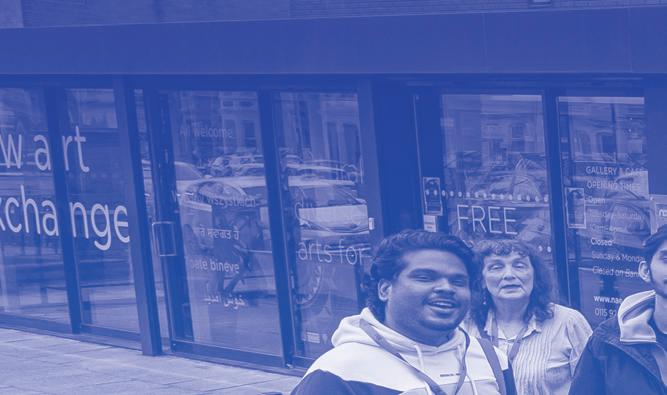





Real transformation can’t only be measured in policies or strategies, it’s felt in the lived experiences of the people who built it, challenged it, and carried it forward. When I reflect on RETURN, I realize that although the leadership model is the structure that makes change possible, it’s the people, the team members, community leaders, and artists, who have truly brought this change to life.
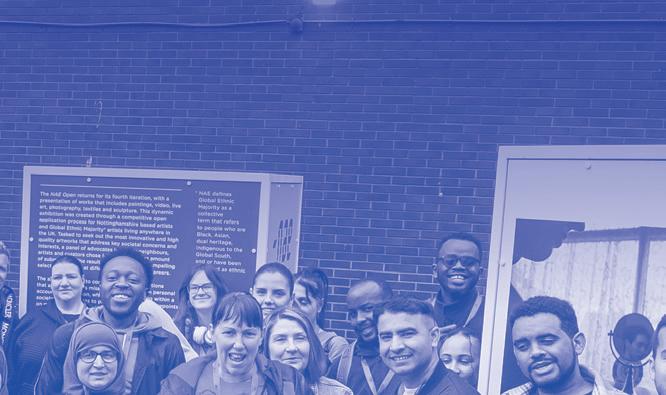
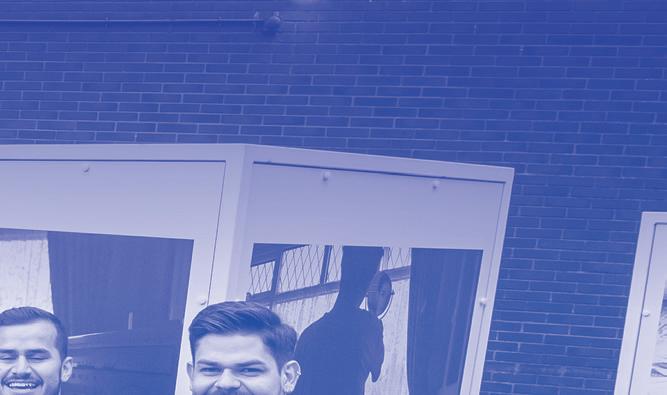




I learned early on that true leadership transformation happens through the people who believe in and embody that change. As we worked to embed power-sharing at every level of the institution, it became clear to me that the real impact wasn’t in a new policy or a change in structure, it was in how people’s roles shifted, how their voices were empowered, and how they began to take ownership of the leadership process itself. For me, the VOICE Assembly represents the visible manifestation of RETURN, but the true power of this transformation lies in the people who made it happen. It is through their experiences that we can truly measure how RETURN has changed the way we view leadership.
The NAE team members who took a leap into the unknown with me were the first to see what it meant to redistribute authority. I vividly remember how uncertain everyone was in the beginning. How do you move from a model of control to one where everyone has a say? What struck me as we moved through this process was the empowerment that began to take root across the team. The shift was not just structural, it was personal. People began to see themselves as leaders, with real influence on the direction of the institution.
But the true test of RETURN came when community leaders, people who had long been marginalised, stepped into leadership roles for the first time. I remember a moment when a community member, who had never been in a decision-making position before, came forward with an idea for an exhibition. The shift in that moment was profound. She wasn’t just participating; she was leading. And in doing so, she reshaped how the programming process worked. Leadership had been shared; not just the decision-making, but the power to shape culture.
And then there were the artists and cultural workers, many of whom had spent years in the background, waiting to be consulted. When they became part of the decision-making process, the work they produced was different—it was more authentic, engaged, and rooted in community needs. Programming, once dictated by the executive team, was now cocreated, with artists and community members leading the charge.
These are not abstract ideas: they are real and profound changes. They represent how RETURN has transformed the way NAE operates, how it collaborates, and how it leads. The people who experienced this transformation first-hand are the ones who can speak most powerfully to what it means to redistribute power: not just in theory, but in practice. Their testimonies bring the model to life, proving that it’s not just about making decisions differently; it’s about rethinking the very nature of leadership.
In this section, we hear directly from the people who have felt the real impact of RETURN. Here are their voices: community leaders, NAE team members, artists, and cultural workers who moved beyond consultation into leadership. Their stories are the heart of this transformation, and their reflections provide an honest, lived account of what it means to shift the balance of power in institutions like NAE.



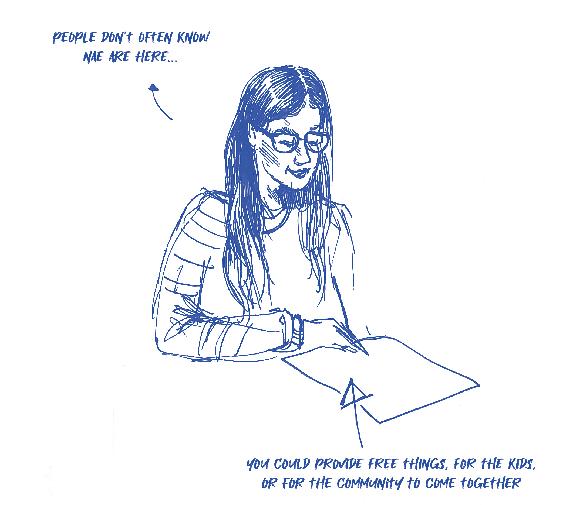

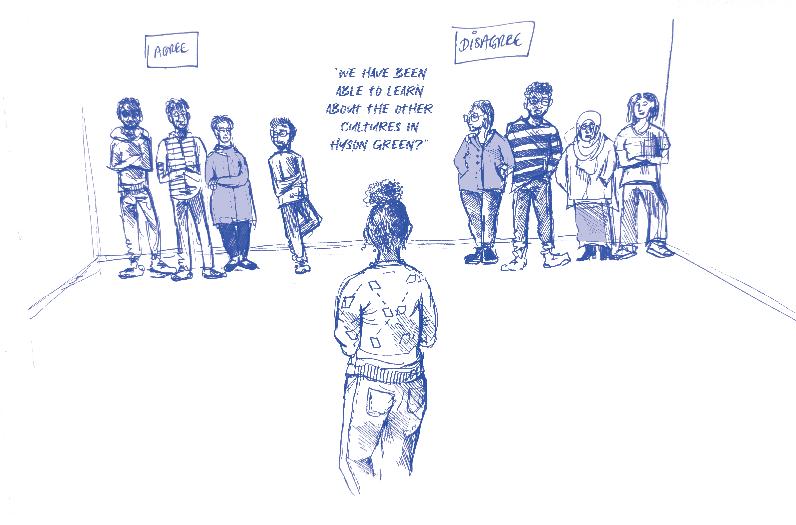
“I’m writing this testimonial as a prologue, a reflection on what I’ve observed and what feels important.
“I haven’t been directly involved in the brilliant work NAE has driven around citizens’ leadership but have had the pleasure of collaboration on other projects. These moments have given me insight, and it’s from that place I share what I’ve witnessed:
“Policies and processes alone cannot make change – it’s how people inhabit and implement them that truly matters.
“Ubuntu philosophy, originating from South African languages and perspectives, says “I am, because we are”, and defines power as relationships between people, planet and generations, past and futurerather than the more common idea of controlling others “Power is regenerative: sharing power doesn’t diminish you, but makes you stronger, and everyone gains in the process.
“No human beings, not just those of us working in the arts, will thrive, or even survive, unless we learn to intersect.
“The Arts tell stories. But those stories only become rich, meaningful, and transformative when we embrace the complexity of intersectionality. And that can only happen when a truly representative group is empowered to make decisions. That’s why the VOICE Assembly matters so deeply. It is a physical, practical, and imaginative manifestation of what well-rounded power can look like.
“One of the biggest challenges we hear from clients is how to truly reflect the complexity of the world they’re operating in, across public, private, and international contexts. We believe that sustainable brilliance comes when you align them all: your culture, your strategy, and your people within the world. It starts with getting your culture right from the beginning, not as an afterthought. When leadership includes trustees, senior teams and citizens, that’s when you begin to reflect the full richness of modern society: not just here in England, but globally. With that diversity comes depth of insight, of imagination, of lived experience, where the Arts excel in tackling universal challenges.
“This isn’t just theory. As founder of Alleyne&, I’ve lived it. In some of the hardest moments of my life, collaboration is what kept me going. It’s in my blood. True power is shared. It doesn’t sit in one person’s hands. Power multiplies when you stop holding it all yourself. When we’ve worked like that, the results have always spoken for themselves.
“The VOICE assembly embodies this work and the results to date are astounding. The process gives me hope, the results deep joy.”
Suzanne Alleyne, Creator of Neurology of PowerTM and Founder of Alleyne& www.alleyneand.com

“As a former youth development worker, I have always believed in empowering young people to meet their own needs. When I was selected through sortition for the Citizen Assembly, I felt joyful. Knowing I would be part of a team working towards real change motivated me. I wanted to help shape something bigger than just discussions.
“I entered the process with an open mind, but I was surprised by the depth of engagement. Learning that 52 languages are spoken in Hyson Green made me realise just how deeply culture, identity, and leadership are connected. This isn’t just about representation: it’s about truly understanding our community and ensuring leadership reflects its diversity.
“One of the biggest lessons I took from this experience was that leadership can be shared. I had always thought of leadership as something reserved for those in charge, but here, we were leading cultural decisions ourselves. It wasn’t just about offering ideas and hoping for change; we were shaping real objectives together.
“This experience has changed how I see my own role in the community. It’s shown me that citizen leadership isn’t just a concept, it’s a necessary shift that strengthens institutions. Seeing staff work alongside us, not just for us, made it clear that this wasn’t about consultation but about real decisionmaking power being shared. Their determination to make things happen proved that when leadership is open, it becomes more effective, not less.
“Of course, there were challenges. Language was one of them. English is an international language, but ensuring everyone could fully participate was a leadership lesson in itself. Real leadership isn’t about holding power at the top, it’s about making sure everyone has the ability to contribute.
“If I could change one thing, I’d love to see an even greater focus on helping young people access education, employment, and training, not just as participants but as future leaders. This isn’t just about cultural institutions; it’s about creating pathways for leadership in every aspect of life.
“Even though I can’t attend this time, I want to stay involved through emails, calls, and messages. To anyone considering joining the Assembly in the future, I’d say: go for it. It’s an eye-opener, and is not just about culture, but about how leadership should work in our communities.
“And if I could say one thing to cultural institutions, it would be this: sharing leadership doesn’t weaken you. It makes you stronger.”
Rudolph Smellie, VOICE Citizen Assembly Member
“Back in the days before the New Art Exchange building existed in its current form, there was a big old Doctor’s house on the Gregory Boulevard plot. When my Grandma died suddenly at a young age, the council housed my Grandad and his eleven kids in that house, so my mum grew up being part of the Hyson Green community. She told me stories of her childhood: how she and her sisters would run wildly up and down the shiny parquet flooring of the local library in their socks (sorry librarians!) and the food shops they’d be sent to before the local Asda was built.
“So, with that personal tether, and my passion for platforming community voices, I was excited to start working on the VOICE Citizen Assembly with the team at New Art Exchange. I had read somewhere that Citizen Assemblies are considered the ultimate examples of co-production. I admired the team’s bravery but, if I’m honest, I was also slightly cautious. Was this really the answer to deeply rooted issues of relevance, inclusion, access, diversity, and community empowerment? Could a Citizen Assembly model truly be the way forward?
“During the planning phase, I asked the NAE team what they thought a ‘good’ Citizen Assembly would look like and how we’d know when we got there. We shared ideas about success and failure, but since integrating a Citizen Assembly model into institutional leadership was still experimental, we agreed on some simple, human-centred measures: We wanted people (citizens) to attend, to build relationships, to experience the process positively as a collective, and to choose to stay engaged throughout. Fast forward to our last group session, and I feel we definitely achieved those goals.
“There were moments of trial and joy throughout this journey. In our last session, we navigated challenging group conversations, but we also experienced moments of genuine kindness. A few members unexpectedly gifted me ribbon-wrapped chocolates, and two women shared how they’d become honorary sisters because of this process.
“I am deeply grateful to every member of the group for answering the call out, putting their trust in us, and being willing to participate even when none of us could confidently say where it was going. This has been one of my favourite cultural projects to date. I can’t wait to see how the group’s final recommendations will manifest both within the building and out in the community.”
Natelle Morgan-Brown, Independent Facilitator of the VOICE Citizen Assembly
“A citizen-led approach has placed the Hyson Green community at the heart of NAE’s leadership. Recognising that the people we serve are also decision-makers in our society, and empowering them to become leaders within the organisation and the neighbourhood, has been a fundamental shift in how NAE works. It is no longer about delivering to communities, but leading with them.
“As someone who grew up in an area similar to Hyson Green, in Leicester, witnessing this transformation has been deeply inspiring. To see the voices of citizens guiding institutional direction is powerful, and it is already generating a momentum that feels real, necessary and exciting.
“As a trustee, this shift has transformed how I understand equity, diversity and inclusion. It is not enough for EDI to be a set of values that inform how an organisation behaves. It must shape who holds power and how decisions are made. As the leader of Inspirate, a diverse-led NPO, this has been particularly resonant. True equity means embedding diverse voices structurally, not symbolically. It is about creating an ecosystem where culture is not something done to people, but something grown with them.
“Too often, power flows from the top down. But power that is shared and held by many is the only kind that leads to true inclusion. When diverse communities are at the centre of cultural leadership, like species in a flourishing coral reef, the whole ecosystem thrives. That is how we build lasting legacies.
“I have been surprised, positively, by the speed at which NAE has embedded this citizen-led model. To see it take root and succeed so quickly makes me proud. As a trustee, it reinforces the idea that this is not just possible. It is urgent. Institutions need to rethink leadership entirely, and I believe what we have done here offers a path others can follow.
“To organisations serious about embedding equity and inclusion, my message is simple: start by shifting who holds the power. Culture has the potential to heal, connect and transform. But only when the community is part of the leadership, not just the audience.
“We are not just making art. We are building a movement. A living, evolving cultural ecosystem that will sustain itself because it belongs to the people. Whether you are an artist, policymaker, educator or neighbour, there is a place for you in shaping the future. I invite you to join us.”
Jiten Anand, Trustee, New Art Exchange
“As someone who is active in the grassroots creative community, NAE used to feel more like an elite institution. From the outside, looking in, I saw that it didn’t offer opportunities for me or for others from my community. There was a clear disconnect between the building and the people who lived around it.
“Since the citizen-led decision-making model was introduced, I’ve seen NAE redefine itself around the needs and voices of those who live closest to it. The right stakeholders are now shaping the organisation, people with a real stake in Hyson Green and the surrounding areas. That shift has made a huge difference.
“Bringing in a citizen-led approach has made NAE more approachable. Knowing that people from our local community are part of its decision-making gives creatives like me a sense that we’re on a level playing field. It makes it easier to apply for opportunities because there’s more trust in the process. Importantly, it means decisions are being made by people who understand the cultural realities and lived experiences of artists applying. The cultural nuances of our work are finally being seen and taken seriously.
“I’ve personally benefited from this shift. I applied to the Exhibit opportunity and was selected by the citizen-led group from over 300 artists worldwide to present an exhibition exploring my Caribbean heritage. That would not have happened in the past. This exhibition will connect deeply with Nottingham’s and the UK’s vibrant Caribbean diaspora, creating space for shared stories and cultural reflection. That space matters.
“The citizen-led approach at NAE has reshaped how I see leadership in the arts. It puts collaboration, shared ownership and lived experience above hierarchy and authority. It shows that leadership is not about being in charge, it’s about creating space for diverse voices to shape the direction and impact of cultural work. When community members become co-creators, not just audiences, the work becomes more meaningful and more relevant. When leadership is rooted in care, inclusion and trust, cultural spaces are transformed into places of empowerment.
“Citizen-led leadership is vital for the future of cultural spaces. It brings authenticity, inclusivity and real local ownership. When decisions are rooted in community needs, spaces become more resilient and adaptable. It builds trust and allows for innovation that’s culturally grounded. Unlike top-down models, it brings accountability and transparency, with leaders directly answerable to their communities. Cultural spaces like NAE become platforms for connection, expression and change, grounded in the people they serve and sustained by their participation.
“To other organisations considering a citizen-led model, I’d say: embrace the shift. It’s not about giving up control, it’s about building stronger, more relevant and more connected institutions. Trust your communities. At NAE, I’ve seen that when people feel truly heard and empowered, cultural spaces become more vibrant, inclusive and sustainable. It takes courage to move away from traditional models, but what you gain is far greater. A richer, more authentic practice that reflects real lives and builds lasting change.”
Nate Coltrane, Creative Director, OUR YARD
“Throughout my career, I’ve had the privilege of leading a number of truly remarkable projects that have enabled thousands to build skills, access opportunities, and help build ‘place’. While they delivered tangible impact and met funders’ expectations, I often questioned their foundation. Were they truly what participants wanted? Did they make a meaningful difference?
“Too often, communities were consulted, but consultation isn’t the same as power. Their voices were frequently overshadowed by institutions that assumed ‘they knew best’.
“At NAE, we’ve embraced something fundamentally different; a citizen-led process that doesn’t simply invite community voices in but gives them real authority. This has challenged us to rethink our role, not just to listen, but to be guided. Not to seek input, but to facilitate influence. In a sector that often clings to institutional expertise, this shift is both radical and necessary.
“Our recent capital refurbishment project showed how influential and critically important this approach can be. When we asked our communities what they wanted from our spaces, their responses went much deeper than we ever expected. They spoke of what they loved about NAE, what the space could offer, and also what wasn’t working. A striking example was the street gallery, originally designed to engage those hesitant to enter traditional cultural spaces. In reality, it became clear that this had in itself become a barrier; seen by many as intimidating and unwelcoming.
“This critical feedback led us to rethink its purpose. Led by the voice of our community, we made the decision to remove the street gallery and develop a longer-term project that could better reflect its original aim.
“The sector has long spoken about inclusion and representation, yet efforts often remain surface-level. NAE pushes for structural change: redistributing power, elevating lived experience, and fostering trust.
“This process didn’t just reshape a project, it challenged our assumptions. It reminded us to prioritise presence over presentation, and relationships over outputs. It forced us to consider whether our values had been overshadowed by the pressure to produce and deliver.
“To other leaders: if you want to truly understand your community, let go of your assumptions. Open the door wider than feels comfortable. The greatest transformation might not be in what your community asks for, but in how deeply it changes you when you truly listen.”
Adam Roe, Executive Director, New Art Exchange
Testimonies about Power Redistribution & Leadership Shift
“For the first time, I felt I wasn’t just giving an opinion, I was leading.”
Antonio O’Dell, VOICE Citizen Assembly Member
“We weren’t just consulted. We shaped the decisions.”
Teresa Lees, VOICE Citizen Assembly Member
“Before, I didn’t think I had a say in my community. Now, I see that power can be shared.”
Nichola Barber, VOICE Citizen Assembly Member
Testimonies about Institutional Impact & Action
“The VOICE Assembly didn’t just listen to us, it acted on what we said.”
Md Musa Sayem, VOICE Citizen Assembly Member
“RETURN isn’t just talk: it’s action. I hope more institutions follow this model.”
Patrick Kigotho, VOICE Citizen Assembly Member
“Change is still in progress, but we have found authentic solutions for our community.”
Zeynel Iltas, VOICE Citizen Assembly Member
Testimonies about The Call to Action & Global Movement
This experience changed my understanding of leadership. Institutions must listen but, more importantly, they must act.”
Angela Regan, VOICE Citizen Assembly Member
“I’ve seen leadership work differently. If we don’t share power now, we risk losing the communities we serve.”
Antonio O’Dell, VOICE Citizen Assembly Member
These lived experiences demonstrate that RETURN is not theoretical: it is a living model that has the power to transform institutions. As we look ahead, the challenge is clear: will institutions embrace this shift, or will they be left behind?

The future of cultural leadership is unfolding in real time. I’ve lived it. I’ve seen how the traditional top-down models that have long dominated the cultural sector are no longer sufficient. As I watched communities engage more deeply at New Art Exchange, I realised something profound: the future of leadership must be shaped by the people we serve, not just by a few at the top. The old structures of authority, ones that once kept power in the hands of the few, are breaking down, and communities are demanding to be heard, valued, and actively involved in decision-making.
RETURN isn’t just a theoretical shift, it’s the change that cultural institutions must urgently embrace. The truth is that institutions that continue to rely on traditional power structures risk becoming irrelevant in a world that is moving towards collaboration and participation.
I’ve witnessed the transformation first-hand. At New Art Exchange, we didn’t just adopt RETURN as a model; we are living it. We are living proof that citizen-led decisionmaking isn’t just possible: it’s essential for long-term sustainability and institutional resilience. The measurable results we’ve seen at NAE are evidence of this truth. RETURN has worked, and now the question isn’t if this shift will happen, but how quickly will the cultural sector act to embrace it?
This is the moment for cultural institutions to step up. The future of cultural leadership is in our hands, and it’s not a future that we can afford to wait for. RETURN is a call to action, an invitation for institutions to do more than participate in change, but to drive it. This is the moment for institutions to lead the way and define the future of culture for generations to come.
While I had the privilege of leading its first iteration, RETURN is not mine to keep. It is a framework that can be adapted, owned and shaped by others, by any institution willing to lead with courage, accountability and community at its core.
And the journey continues. Will you be part of it?
Saad Eddine Said


Saad Eddine Said is a cultural leader, strategist, and advocate for systemic transformation in the arts. As CEO and Artistic Director of New Art Exchange (NAE), he has led the organisation’s evolution into a global model for citizen-powered cultural leadership.
Through RETURN, NAE became the first cultural institution in the world to embed a permanent Citizen Assembly into its leadership structure, designing and delivering a globally adaptable model that redefines how institutions share power, make decisions, and sustain transformation.
More than just a leadership idea, RETURN is the first fully structured system for embedding citizen-led decision-making as a permanent model within cultural institutions. Combining structural redistribution of power, a tested transition process, and a practical implementation framework, it moves participatory leadership beyond theory into lasting institutional change. In designing this unique ecosystem, Saad has ensured that RETURN is not just an innovative leadership shift but a tested, replicable roadmap for institutions worldwide.
As the author of this blueprint, Saad has drawn on years of learning, practice, and lived experience to offer a practical, tested model for leadership transformation, co-creation, and long-term structural change. Through RETURN, cultural leaders, funders, and policymakers are invited to rethink leadership, move beyond token engagement, and embed power-sharing in ways that make institutions more relevant, responsive, and resilient.
With experience across Europe, Asia, Africa, and West Asia, Saad has contributed to major cultural and civic initiatives that challenge traditional power structures and redefine leadership in the arts. His expertise spans strategic leadership, participatory decision-making, financial sustainability, and cross-sector collaboration, ensuring that cultural institutions are equipped for the future: stronger, more accountable, and led by the communities they serve.
Beyond NAE, Saad is Chair of CVAN England (Contemporary Visual Arts Network), where he works on shaping national funding strategies, policies, and advocacy efforts to champion equity in the arts. He is also a former Co-Chair of the What Next? Movement, Director of HOME Slough, and Artistic Director at Battersea Arts Centre, leading pioneering participatory cultural projects across the UK.
An internationally sought-after speaker, Saad has shared insights at Clore Leadership, Gulbenkian Foundation, British Council, World Bank, Africans Rising, and major cultural policy forums worldwide. RETURN is part of a growing movement to redefine leadership in the cultural sector, and Saad’s work contributes to this shift; helping institutions rethink power-sharing, co-create with communities, and build more sustainable, citizen-powered cultural ecosystems

New Art Exchange (NAE) is the UK’s leading contemporary arts organisation dedicated to championing Global Ethnic Majority artists and communities. Based in Hyson Green, Nottingham, NAE is an internationally recognised institution committed to cultural equity, artistic excellence, and deep civic engagement.
NAE’s mission is to transform the role of arts institutions by placing citizens at the centre of cultural decision-making. The organisation has pioneered RETURN, a groundbreaking governance model that embeds permanent citizen leadership at the highest level of decision-making. Through its Three-Pillar Leadership Model, NAE ensures that citizen voices actively shape programming, funding strategies, and institutional policies.
More than just a gallery, NAE is a catalyst for change, working at the intersection of art, activism, and civic leadership. The organisation delivers bold, socially engaged artistic programmes, commissions cuttingedge contemporary work, and provides opportunities for early career and established artists from underrepresented backgrounds.
NAE’s impact extends beyond the UK. It co-chairs CVAN England, influences national policy on arts funding and leadership, and collaborates with global partners to create inclusive cultural infrastructures. As an organisation committed to structural change, NAE is shaping the future of cultural institutions worldwide, ensuring that leadership is more democratic, representative, and community-led than ever before.
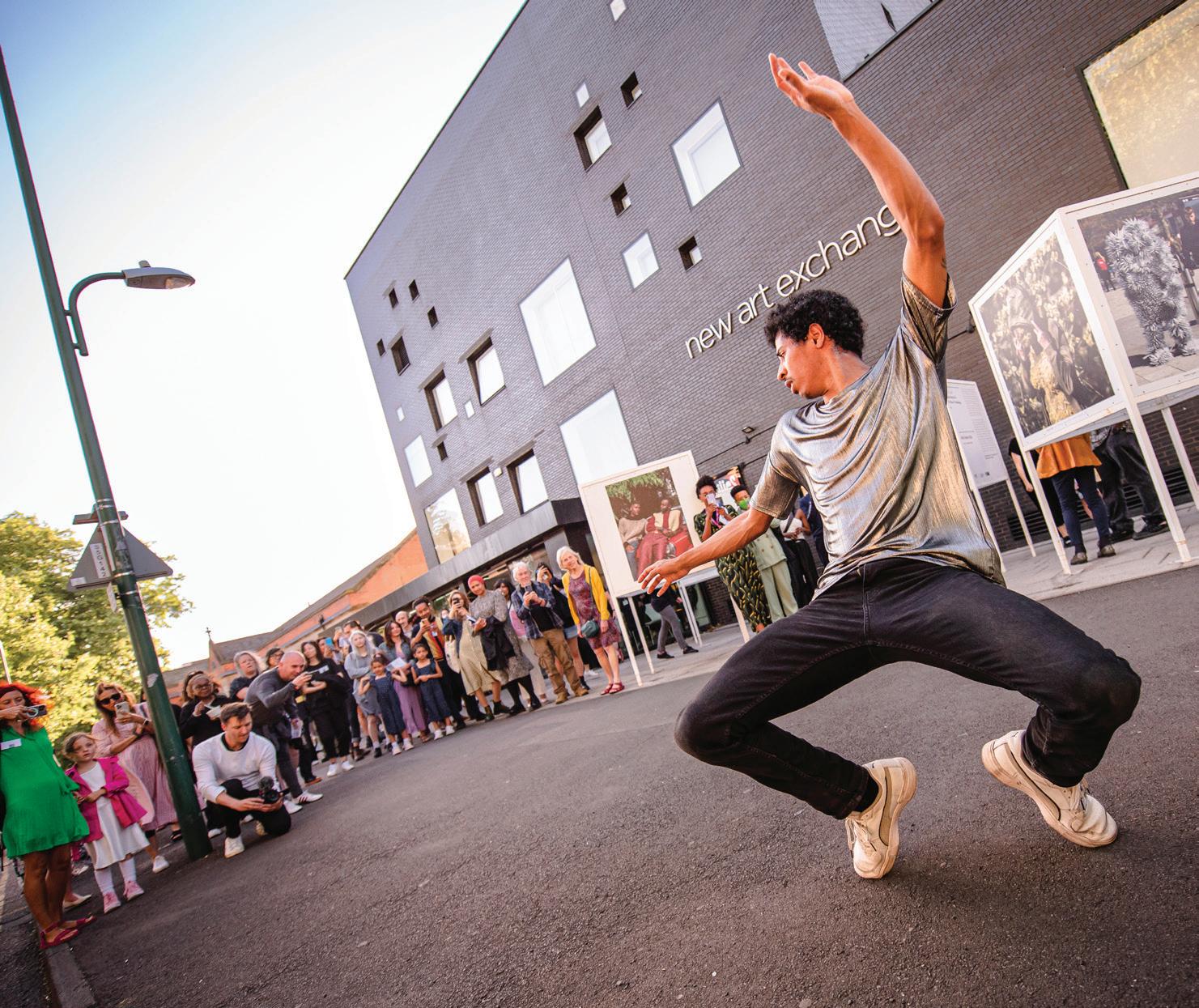

This book is the result of a collective effort shaped by the voices, dedication, and beliefs of so many people who have walked this journey with us. While I carried the pen, the ideas, courage and direction came from many. It belongs to all those who have built, challenged and shaped this journey, the citizens, artists, board members, colleagues and partners who dared to reimagine how leadership can work and made that vision real.
To the NAE team, past and present: your commitment to reimagining what cultural leadership can be has been the driving force behind RETURN. This work has challenged us, pushed us, and reshaped us, and it is your dedication that has made it possible.
To our Citizen Assembly members and all those who participated in our deliberations: your dedication, vision, and trust in this process have shown what is possible when power is truly shared. From the very first meetings to the decisions that have shaped this institution, your voices have transformed not just NAE, but the wider conversation about cultural leadership.
To our board members, and especially to our chair, Samori Gambrah, and vice-chair, Christopher O’Brien: thank you for embracing change, for questioning with care, and for standing by the principle that leadership must be redefined. Your unwavering support and ability to challenge us to always strive for better has been invaluable in ensuring RETURN’s success. Your openness to new ways of working has allowed RETURN to take root.
To our neighbourhood and communities in Hyson Green: this work is yours. Every conversation, every challenge, every act of collective imagining has helped shape RETURN into what it is today.
This is not about an institution; it is about a movement, and we are grateful to be part of it with you.
To all the partners and leaders who helped us reflect and pushed us to lead with authenticity and integrity: your alliances have ensured that this process kept its commitment to being a robust and fair system for genuine representation.
To the facilitators and chairs who guided our assemblies and citizenled panels, and to the artists, writers, filmmakers, and transcribers who captured this journey with care: your work has helped bring these conversations to life, ensuring that every voice was heard and every idea had space to grow.
A special dedication goes to Leslie McDonald, our former chair, whose leadership, wisdom, and generosity of spirit remain embedded in the fabric of NAE.
Leslie believed in the power of change, in the potential of RETURN, and in the strength of our community. His legacy is felt in every step of this work, and we honour him by continuing this journey.
Finally, we would like to acknowledge Arts Council England for its continued support of New Art Exchange and its commitment to ambitious, community-driven cultural practice. In the most recent National Portfolio Organisation (NPO) investment round, ACE recognised RETURN as a key element of NAE’s future, providing increased funding to enable the deeper embedding of citizen-led decision-making within our institution. This investment reflects a growing, sector-wide recognition that participatory leadership is not just an engagement strategy but a necessary evolution in cultural governance. While this support has strengthened RETURN’s development, the vision, design, and leadership of this model remain rooted in NAE’s long-term commitment to structural change.
This blueprint is not an endpoint, but a beginning. To everyone who has shaped it, challenged it, strengthened it: thank you.
We would also like to extend our thanks to the creative and collaborative individuals who brought this blueprint to life:
To Jasmine Thompson, for the illustrations that reflect the energy and vision of RETURN and the VOICE Assembly leadership.
To Tom Morley, for photography that captured the spirit of this journey with care.
To Peter Duffy, for the design of this book and his ability to shape ideas into a clear visual language.
To Rachel Graves, for the thoughtful support and contribution as an editor.
To Binki Taylor and Owen Griffiths, for bringing their facilitation expertise with generosity and clarity.
To Natelle Morgan-Brown, for chairing the VOICE Assembly with insight, empathy, and integrity.
Q: What is RETURN?
A: RETURN is a pioneering leadership model that permanently embeds citizen leadership within cultural institutions. It moves beyond consultation by ensuring citizens co-lead institutions alongside executives and boards, shaping strategy, vision, and priorities.
Q: How is RETURN different from advisory panels or participatory budgeting?
This section answers key questions about how RETURN transforms leadership in cultural institutions, its impact, and how it works at New Art Exchange (NAE) and beyond.
A: Many cultural institutions invite citizens to give feedback, but they rarely share leadership. RETURN is the first structured leadership model that ensures citizens are an integral part of institutional decision-making processes, not just as advisors or participants.
Q: What is the Three-Pillar Leadership Model?
A: RETURN is structured through three interdependent leadership pillars:
1. Citizen Leadership (VOICE Assembly) –Citizens shape vision, priorities, and institutional direction.
2. Executive Leadership (Directors & Teams) –Delivers excellence in programming, strategy, and operations.
3. Oversight Leadership (Board of Trustees) –Ensures alignment with mission and long-term sustainability. These three pillars work together to drive mission, excellence, and relevance, making RETURN a sustainable leadership transformation rather than a temporary intervention.
Q: Is RETURN only for NAE?
A: No. RETURN is a scalable and flexible leadership model that can be adapted by museums, galleries, performing arts organisations, and funders worldwide.
Q: Is RETURN a governance model? How does it relate to legal responsibilities like board oversight?
A: RETURN is a leadership model, not a governance framework. It redistributes power between citizens, executives, and boards, but does not remove the legal duties held by trustees under charity law.
In RETURN, the board acts as a steward of participatory values, ensuring balance, sustainability, and alignment with mission and finances. It continues to fulfil all legal responsibilities in line with Charity Commission guidance, including holding the executive leadership to account, while enabling shared leadership with citizens.
Q: What is the VOICE Assembly?
A: The VOICE Assembly is a permanent citizen decision-making body embedded in NAE’s leadership structure. It consists of 40 randomly selected citizens from Hyson Green, who shape NAE’s strategic vision, priorities, and future direction.
Q: How is the VOICE Assembly different from smaller citizen panels?
A: While NAE also collaborates with smaller citizen-led panels focused on programming, the VOICE Assembly has a distinct leadership role. It influences NAE’s broader vision and priorities for creative and cultural development in Hyson Green.
Q: How are members selected?
A: Selection is randomised through a civic lottery, ensuring representation across gender, ethnicity, age, disability, and education levels. This process ensures leadership is diverse, inclusive, and reflective of the community.
Q: Do members need special knowledge or experience?
A: No, no prior experience is needed. Participants are provided with all the information, tools, and learning opportunities they need to engage effectively.
Q: What happens to the VOICE Assembly’s recommendations?
A: The Assembly’s ideas and recommendations are made public and directly influence NAE’s leadership, programming, and strategic decisions.
Q: How does RETURN ensure that citizen leadership remains permanent?
A: The VOICE Assembly operates on a two-year cycle, with new members selected every 24 months through a fresh civic lottery. Up to 20% of outgoing members can join the first phase of the next Assembly to ensure continuity and knowledge transfer.
Q: What happens after the two-year term ends?
A: The next i teration of the VOICE Assembly will monitor progress. Former members may be invited to join smaller citizen-led groups shaping specific projects or commissions. All members will receive updates on how their recommendations are being implemented.
Q: Can RETURN work in other cultural institutions?
A: Yes. RETURN’s leadership structure is scalable and adaptable, allowing institutions of different sizes and contexts to embed citizen leadership in a way that aligns with their unique mission and structure.
Q: What’s next for RETURN?
A: RETURN will continue to evolve, and NAE intends to share our learning internationally, supporting other institutions in embedding citizen-led decision-making. Our ambition is for RETURN to inspire a broader movement towards deeper leadership transformation in the cultural sector globally.
Q: How can I stay updated on RETURN?
A: Visi t our website, follow NAE on social media, or sign up for our newsletter for updates on RETURN’s impact and next steps.
This glossary defines key concepts, principles, and methodologies used throughout the RETURN Blueprint. It serves as a reference point for institutions, funders, and practitioners looking to embed citizen-led decisionmaking into their governance structures.
Accountability Without Bureaucracy – Ensuring transparency and responsibility in governance or leadership without excessive administrative burdens.
Assembly Model (Citizen Assembly) – A structured deliberative process where citizens, selected through sortition or invitation, hold real decisionmaking power.
Board of Trustees – The governance body responsible for safeguarding the organisation’s mission, financial integrity, and legal compliance. It holds the executive to account and supports participatory leadership by maintaining balance across the leadership pillars and ensuring alignment with Charity Commission guidance.
Bottom-Up Leadership – A leadership approach where communities drive decision-making, rather than institutions or funders.
Citizen Assembly – A permanent leadership structure where citizens co-lead decision-making alongside executives and boards.
Citizen Juries – Temporary, issue-based deliberative panels where citizens debate and make recommendations.
Citizen Panels – Advisory or decision-making bodies that influence governance and programme development.
Co-Creation – A collaborative process where institutions and communities co-develop strategy, programming, and policies. Consultation vs. Shared Leadership – The difference between institutions seeking input (consultation) versus redistributing power (shared leadership).
Cultural Democracy – The belief that cultural institutions should be shaped by and accountable to the communities they serve.
Deliberation – A structured decision-making process that ensures diverse perspectives are considered before action is taken.
Distributed Leadership – A leadership model where decision-making is shared across multiple stakeholders rather than concentrated in the hands of a few.
Executive Leadership as Enabler – The redefined role of executives as facilitators of citizen-led decision-making rather than top-down decisionmakers.
Embedded Citizen Leadership – The process of making participatory governance a permanent institutional feature, rather than a temporary project.
FFlattened Hierarchy – A governance structure that reduces power imbalances between executives, staff, and citizens, ensuring more equitable decision-making.
Framework of Fives – A structured model consisting of five core elements that guide institutions in embedding citizen leadership into decision-making processes.
Global Ethnic Majority – A term recognising that Black, Asian, Brown, Indigenous, and racialised communities are the global majority, reframing narratives around representation.
Grassroots Governance – Decision-making that originates at the community level rather than within institutional hierarchies.
IInstitutional Adaptation – The ability of an organisation to evolve leadership structures to accommodate participatory decision-making.
Institutional Mandate for Citizen Leadership – The formal authority granted to citizen-led bodies, ensuring their decisions hold power.
L
Leadership Reform – The process of redesigning leadership structures to centre participatory decision-making.
M
Mandate in Citizen-Led Decision-Making – A defined scope of authority that outlines citizen leadership responsibilities.
Multi-Layered Governance – A model where power is distributed across multiple leadership levels, preventing centralised control.
Neighbourhood-Led Cultural Development – Ensuring cultural institutions align their governance and programming with local priorities.
Networked Governance – A system where institutions collaborate with other organisations, funders, and policymakers to strengthen participatory leadership.
P
Participatory Leadership – A model where decision-making power is shared between citizens, executives, and boards.
Participatory Leadership Model – A framework for shifting institutional power to communities, ensuring co-ownership of governance and programming.
Power Redistribution – The deliberate transfer of authority from institutional leaders to citizens.
Random Selection – A method where citizens are randomly chosen for decision-making bodies, ensuring diversity and representation.
RETURN (RECLAIM, ELEVATE, TRANSFORM, UNLEASH, RENAISSANCE, NEXUS) – The six-phase leadership shift model developed at New Art Exchange.
Shared Leadership – A governance model where decision-making is distributed rather than concentrated at the top.
Sustainable Citizen-Led Governance – The process of embedding participatory leadership into an institution’s long-term governance strategy.
Three-Pillar Leadership Model – The RETURN framework that balances power across three pillars:
1. Citizen Assembly (decision-making)
2. Executive Leadership (enabling change)
3. Board of Trustees (ensuring accountability)
Trust-Based Decision-Making – A leadership model that prioritises transparency, open communication, and collective trust over bureaucratic control.
Whole-Institution Transformation – A comprehensive shift where governance, programming, and institutional culture are fully restructured to embed participatory leadership.
This glossary provides a foundation for understanding the principles, frameworks, and methodologies behind RETURN’s leadership model. It ensures that institutions working to adopt similar approaches have a clear, shared language to guide their work.
For those interested in deepening their understanding of participatory governance, co-leadership models, and structural power shifts in the cultural sector, the following texts, reports and organisations provide valuable insight.
Citizen-Led Governance & Participatory Democracy
Fung, A. (2003). Recipes for Public Spheres: Eight Institutional Design Choices and Their Consequences. Journal of Political Philosophy.
OECD (2020). Innovative Citizen Participation and New Democratic Institutions: Catching the Deliberative Wave. Organisation for Economic Co-operation and Development.
Smith, G. (2009). Democratic Innovations: Designing Institutions for Citizen Participation. Cambridge University Press.
Carson, L., & Hartz-Karp, J. (2005). Adapting and Combining Deliberative Designs: Juries, Polls, and Forums.
Cultural Leadership & Power-Sharing in the Arts
Holden, J. (2015). The Ecology of Culture. Arts & Humanities Research Council.
Wilson, J., Gross, J. (2017). Cultural Democracy: The Case for a Cultural Commons. Kings College London.
Matarasso, F. (2019). A Restless Art: How Participation Won and Why It Matters. McMaster, B. (2008). Supporting Excellence in the Arts: From Measurement to Judgement.
Community-Led & Decolonial Museum Models
Sandell, R. (2017). Museums, Moralities and Human Rights. Routledge. Simpson, M. (2001). Making Representations: Museums in the Post-Colonial Era.
Message, K. (2018). Decolonizing the Museum: The Next Wave of Museum Ethics. Participatory Budgeting & Governance Models
Wampler, B. (2010). Participatory Budgeting in Brazil: Contestation, Cooperation, and Accountability.
Baiocchi, G. (2005). Militants and Citizens: The Politics of Participatory Democracy in Porto Alegre.
Ganuza, E., & Baiocchi, G. (2012). The Power of Ambiguity: How Participatory Budgeting Travels the Globe.
References & Data Sources
This section provides links and citations for the data, statistics, and comparative analysis used throughout the blueprint.
Sector-Wide Data & Reports
Arts Council England (2023). National Portfolio Organisations (NPO) Governance Review.
Arts Council England (2024). Let’s Create: Strategy for 2020-2030.
Audience Finder UK (2023). Cultural Participation & Audience Engagement Trends. UK Government (2023). Creative Industries Sector Vision.
Citizen Engagement & Participatory Democracy
OECD (2022). Deliberative Democracy and Public Decision-Making.
Involve UK (2021). Citizens’ Assemblies and Public Participation: A UK Review.
National Examples of Shared Cultural Leadership
Birmingham Museums Trust (Birmingham)
A model for participatory decision-making in the museum sector, where city-wide citizens shape curatorial processes.
Jury for Joy (Cumbria)
A participatory model where citizens, rather than experts, select public art commissions based on emotional and social impact.
The Albany (London)
A cultural organisation experimenting with citizen co-governance.
Creative People and Places (CPP) (National)
A UK-wide programme that embeds citizen participation in cultural decision-making.
Citizens in Power (National)
A national organisation exploring structural citizen leadership and governance in the cultural sector through policy, frameworks and advocacy.
International Examples of Shared Cultural Leadership
Museum of Freedom & Human Rights (Panama).
Community-governed museum model where local voices shape narratives and exhibitions.
Paris Participatory Budget (France).
Allocates millions in public funding based on citizen-led deliberations, including arts and culture projects.
Museums of the Future (Brazil).
A decolonial and community-driven approach to museum governance, ensuring historically excluded voices shape cultural narratives.
Baltimore Museum of Art (USA).
Shifted governance structures to include citizen-led decision-making in acquisitions and exhibitions.
Porto Alegre Participatory Budgeting (Brazil).
One of the world’s most established participatory budgeting models, influencing cultural and civic investment.
G1000 (Belgium).
A deliberative democracy initiative in which randomly selected citizens propose policies at national and local levels, shaping governance but without direct implementation power.
Participatory Budgeting for Culture (Spain).
Citizens decide cultural funding priorities through democratic deliberation, redistributing municipal cultural budgets annually.
Ukombozi Library & Cultural Centre (Kenya).
A grassroots, community-run cultural space that operates independently of state funding, ensuring local residents and artists lead governance.
vTaiwan Digital Governance Model (Taiwan).
An AI-driven deliberative democracy model where citizens co-create policies and shape civic and cultural governance through digital platforms.
BlakDance & ILBIJERRI Theatre (Australia).
First Nations-led governance structures ensuring Indigenous artists fully control leadership, funding, and decision-making in the performing arts.
This bibliography and resource section provides key texts, case studies, and reports that have informed the development of RETURN. It offers a combination of theoretical perspectives, sector research, and real-world examples of participatory leadership in cultural institutions. The readings and data sources listed here are intended to support those looking to deepen their understanding of citizen-led decision-making and consider its application within their own contexts.
This book is one of only 150 copies in a special limited edition.
Design: Peter Duffy
Illustration: Jasmine Thompson
Photography: Tom Morley
© 2025 New Art Exchange.
All rights reserved. No part of this publication may be reproduced, stored in a retrieval system, or transmitted in any form or by any means, whether electronic, mechanical, photocopying, recording or otherwise, without the publisher’s prior written permission.
ISBN: 978-1-0369-2012-8
Published by New Art Exchange, Hyson Green, Nottingham, UK www.nae.org.uk
A blueprint for rewriting who leads our cultural institutions, and how.
RETURN is among the first institutional leadership models in the global cultural sector to embed citizen-led decision-making as a permanent structure of power in cultural institutions, through a replicable, dynamic, and transformative framework.
This isn’t about participation. It’s about transformation. And the time is now.
